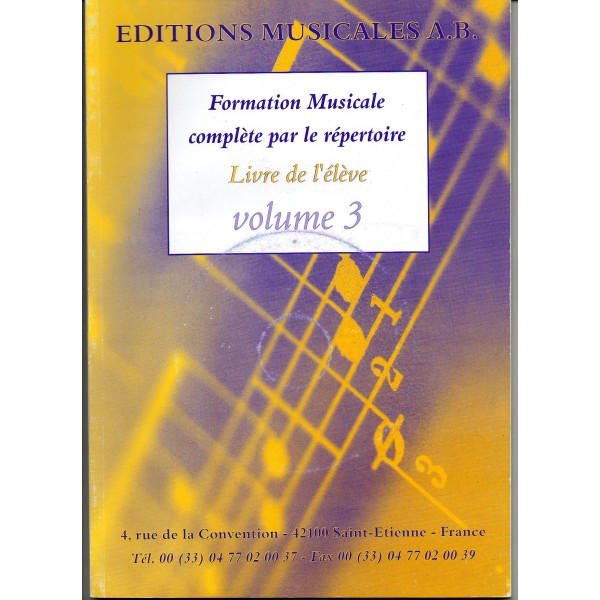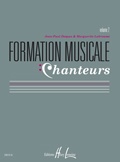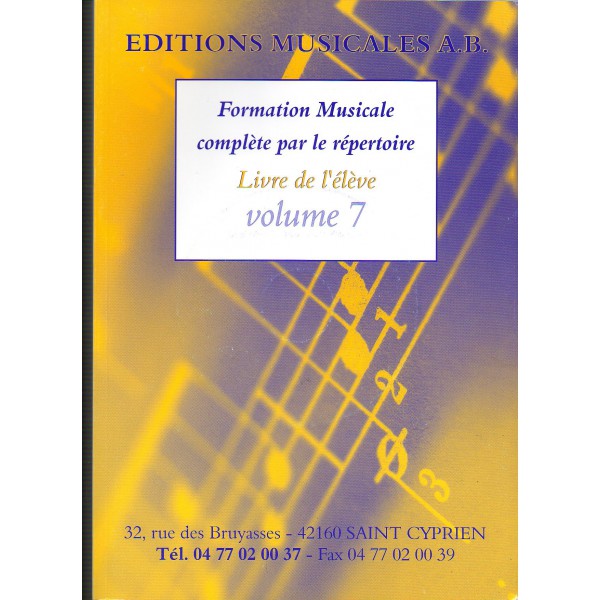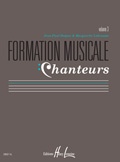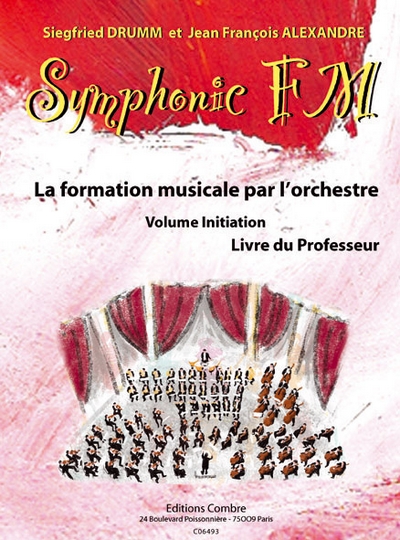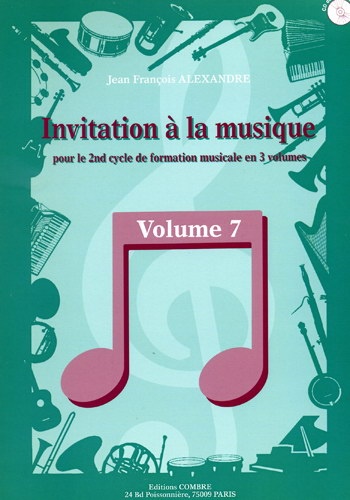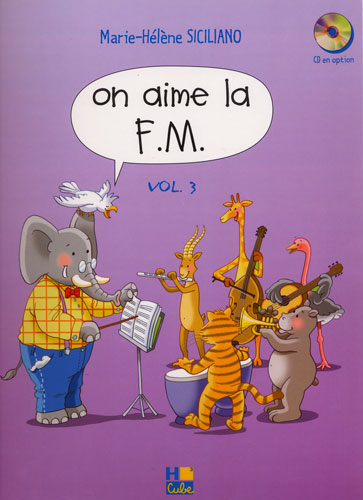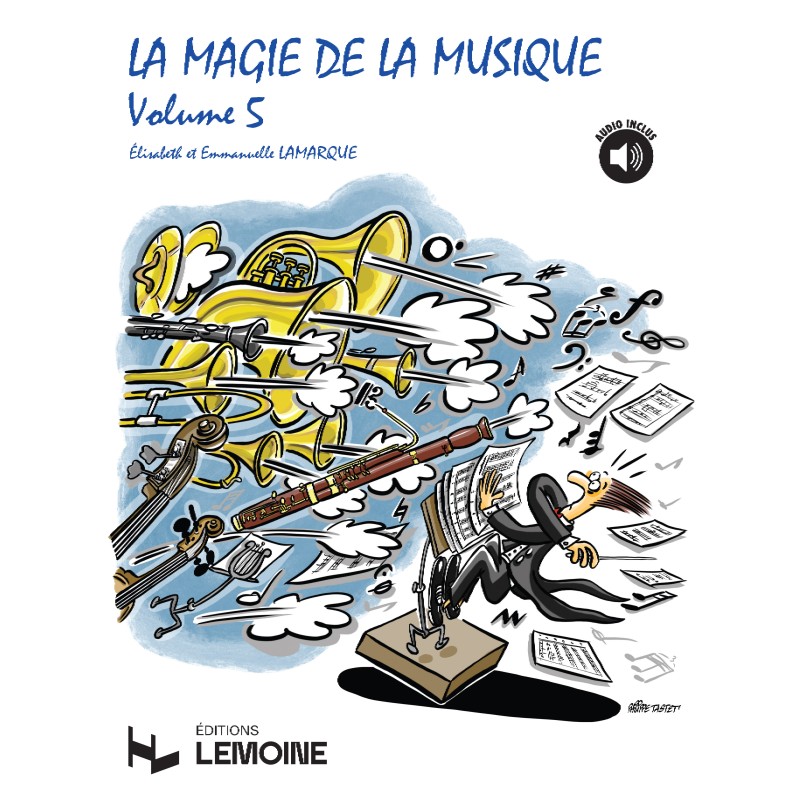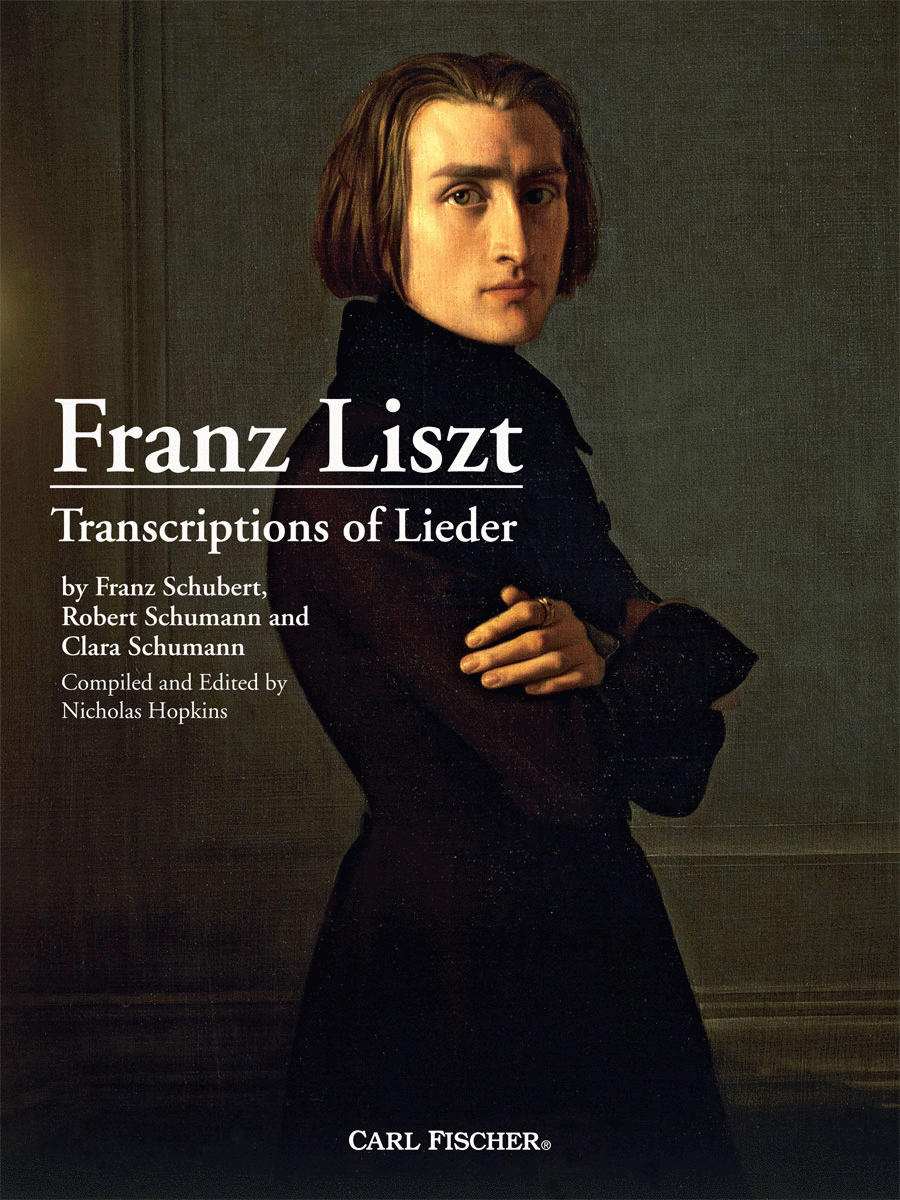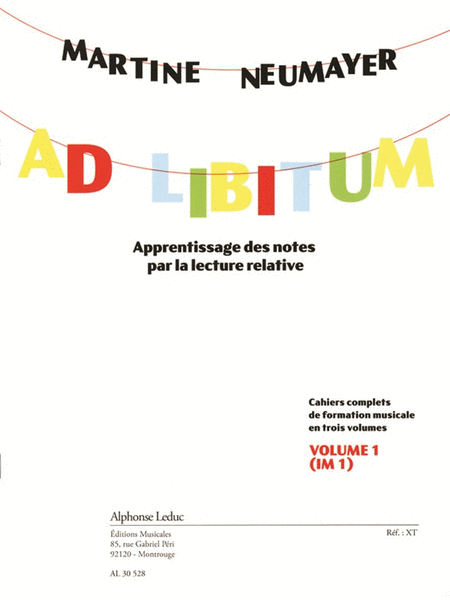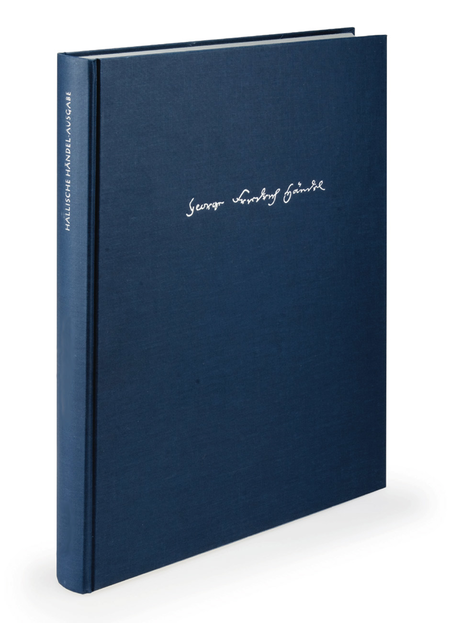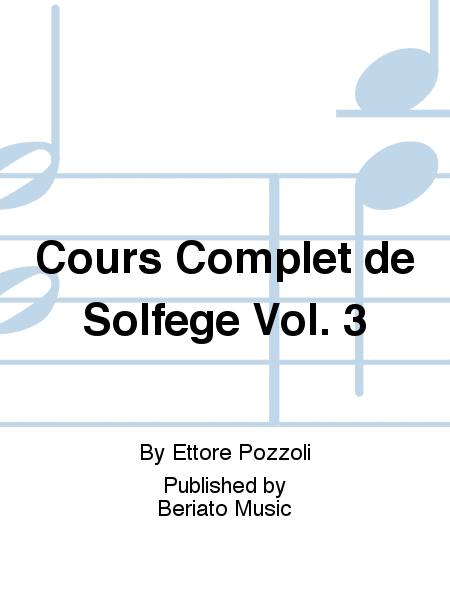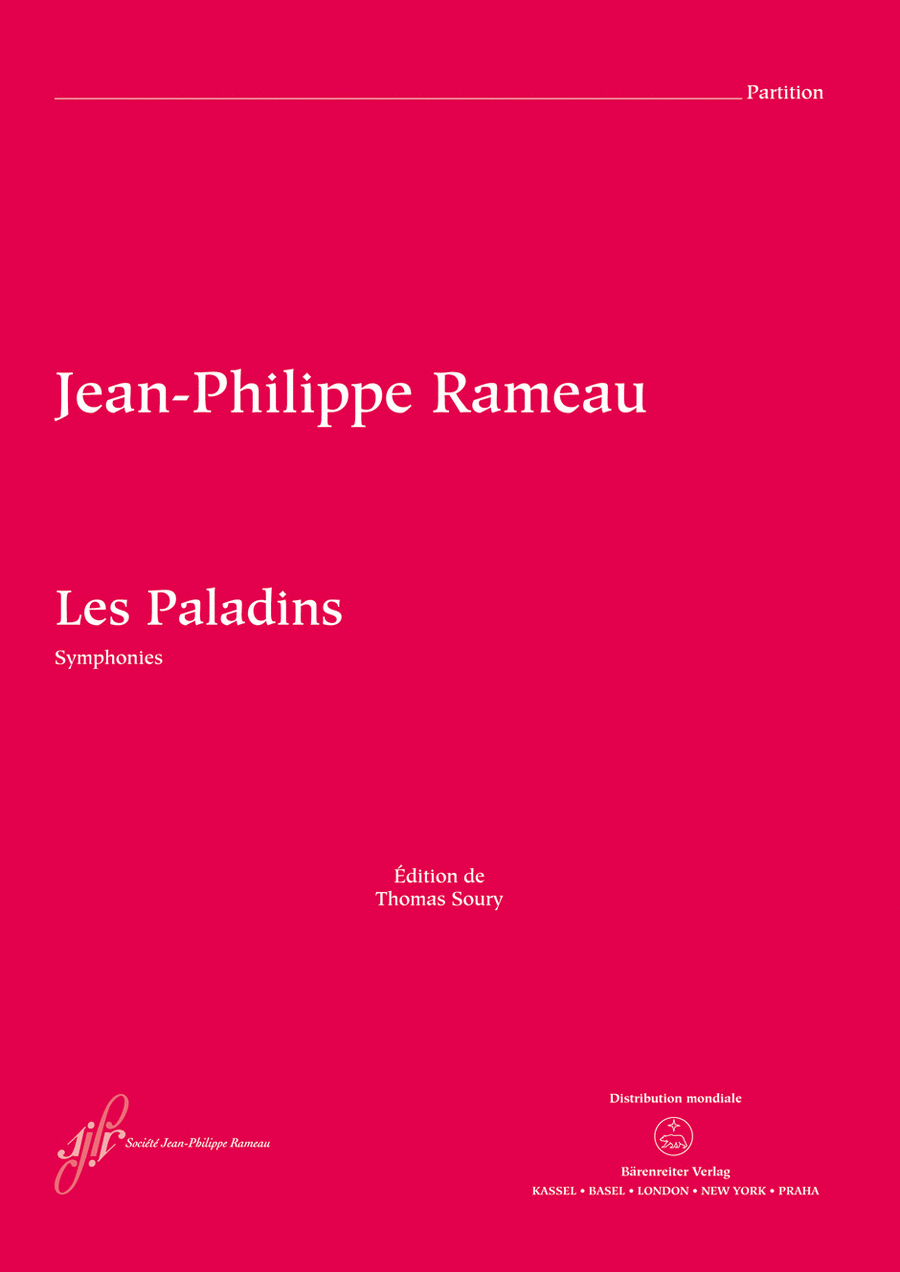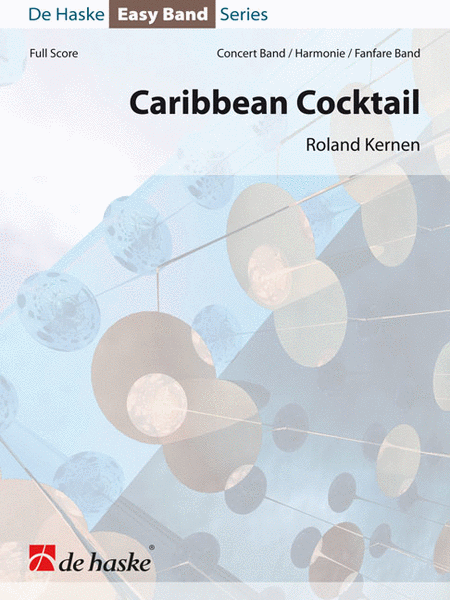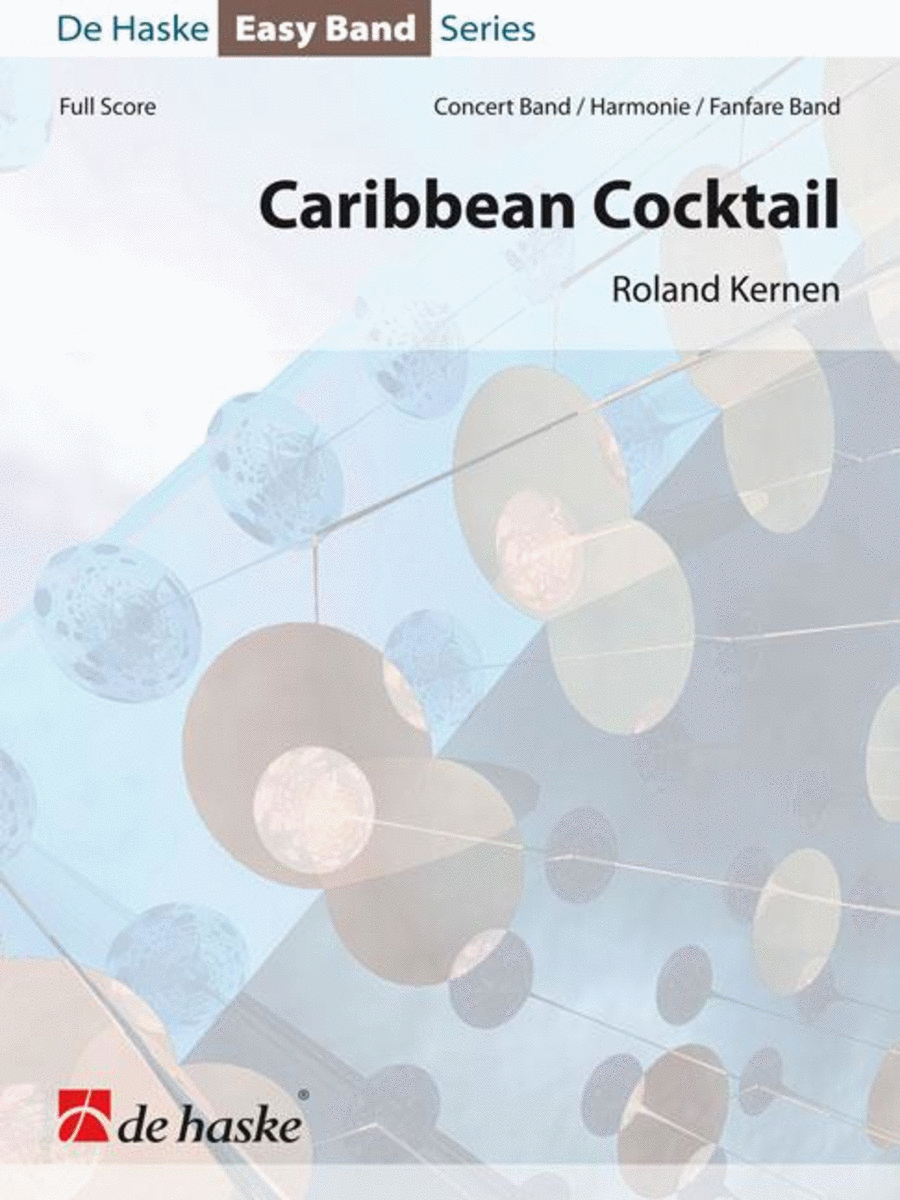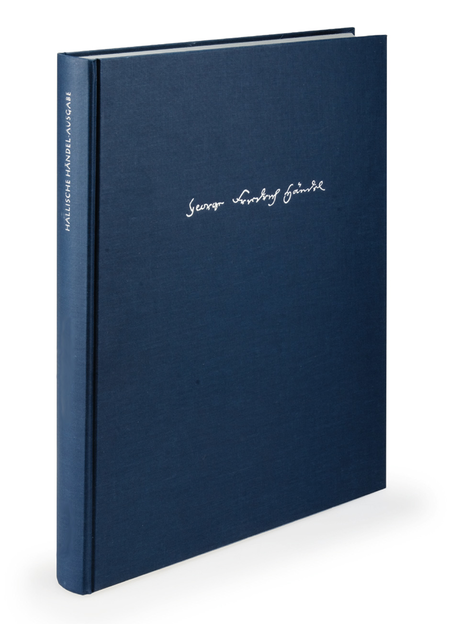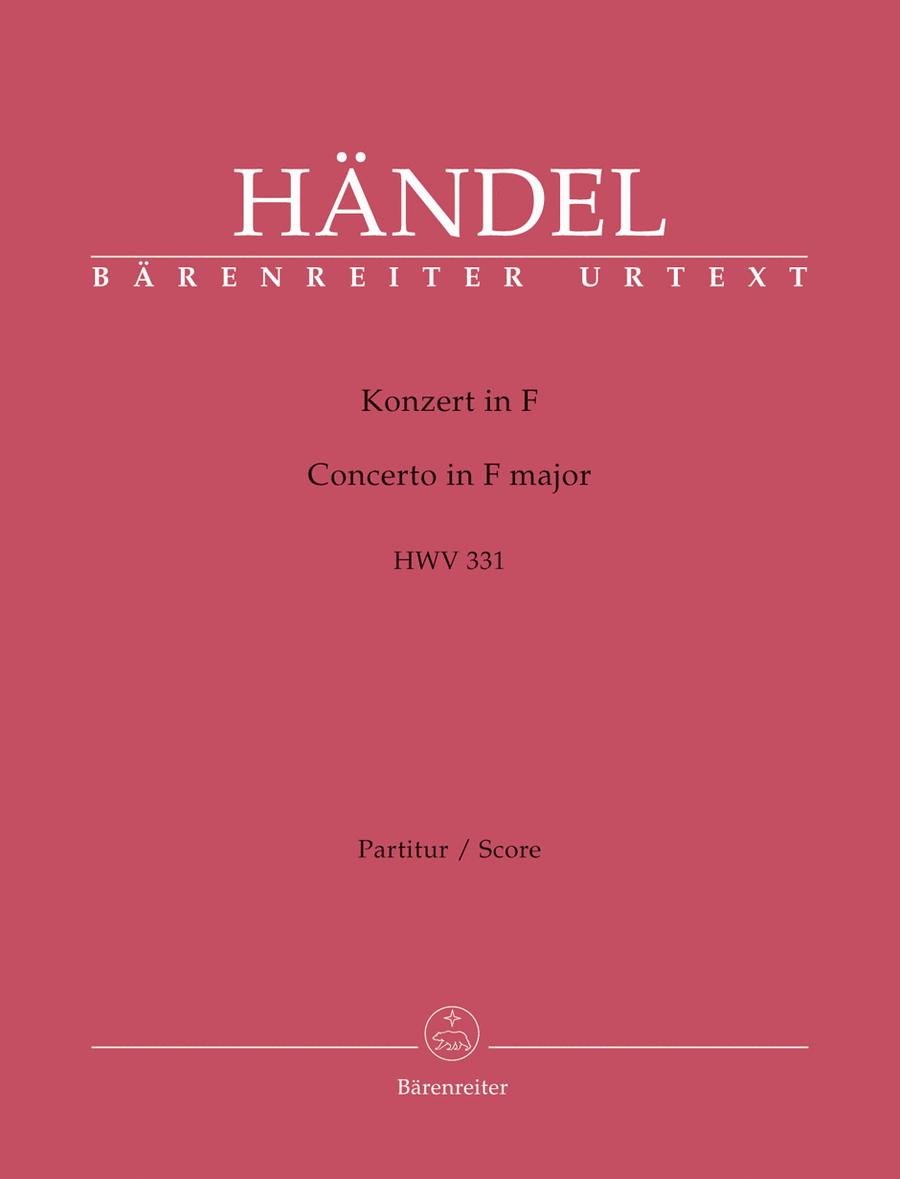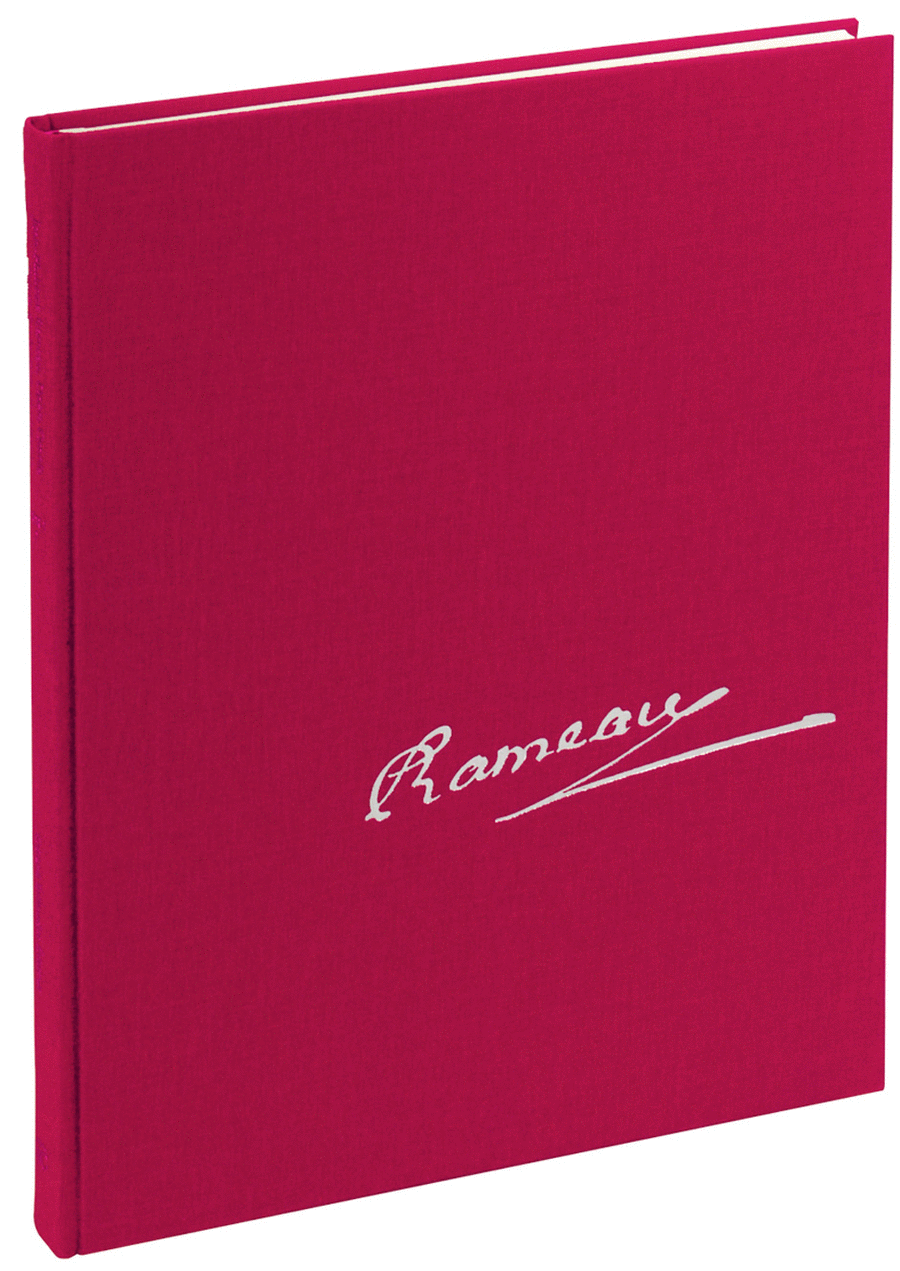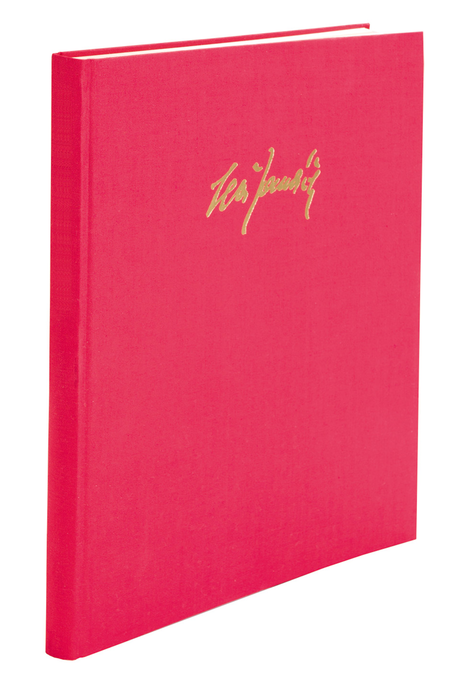|
| Jazz : La Discothèque
Idéale En 25 Albums
Originaux (Coffret 25 CD)
CD [Coffret CDs]
- Record Label: Sony
- Catalog#: 88697 720092
- Country Of Release:...(+)
- Record Label: Sony
- Catalog#: 88697 720092
- Country Of Release: NLD
- Year Of Release: 2010
- Notes: 25 Original Albums In Noble Box
Délais: En Stock | | |
| Diapason Rouge Vol. 3
 En Français En Français
Paroles et Accords
Presses d'lle de France
Tous les chants sont accompagnés de leurs accords de guitare. - 370 chansons d'...(+)
Tous les chants sont accompagnés de leurs accords de guitare. - 370 chansons d'hier et d'aujourd'hui
Le troisième recueil innove pour satisfaire une demande grandissante : en complément des chansons de variété française, des chansons de fête et de veillée, des canons et ritournelles, on y trouve davantage de variété étrangère, des génériques de séries télévisées, ainsi que quelques comédies musicales et opérettes incontournables telles que 'Notre-Dame de Paris', 'Émilie Jolie'? La première et la deuxième partie s?organisent selon l?ordre alphabétique des noms d?interprètes ; les autres parties selon le titre des chansons
Délais: 2-5 jours - En Stock Fournisseur | | |
| Formation Musicale
Complète Vol.3
Formation musicale - Solfège [Partition]
AB Editions Musicales
Ouvrage complet incluant : Lecture de Notes, Lecture Chantée, Dictées à parti...(+)
Ouvrage complet incluant : Lecture de Notes, Lecture Chantée, Dictées à parties manquantes, Dictées Mélodico-Rythmiques, Dépistage de fautes, Lecture Rythmique. Tous les textes sont extraits du Répertoire Classique/ Solfège/Formation Musicale / Formation Musicale
Délais: En Stock | | |
| Labrousse, Marguerite /
Despax, Jean Paul :
Formation Musicale
Chanteurs - Volume 2
 En Français En Français
Formation musicale - Solfège [Partition]
Lemoine, Henry
Notice
Ce manuel s'adresse à des étudiants adultes amateurs ou futurs prof...(+)
Notice
Ce manuel s'adresse à des étudiants adultes amateurs ou futurs professionnels.
Trois volumes correspondant aux trois cycles d'une formation complète sont prévus.
Chaque volume se divise en quatre sections complémentaires :
1. Rythme
2. Intonation et Intervalles
3. Harmonie et Improvisation
4. Analyse et Interprétation
Les sections doivent être abordées simultanément, la progression pouvant coïncider d'une section à l'autre.
Marguerite Labrousse et Jean-Paul Despax, professeurs de formation musicale au CRR de Paris, ont conçu cet ouvrage d'après leur enseignement au sein des classes de chanteurs.
Avant-propos
Ce manuel s'adresse à des étudiants chanteurs adultes amateurs ou futurs professionnels.
Les objectifs en sont :
- une formation rigoureuse et systématique à l'intonation et aux principaux langages musicaux rencontrés dans le répertoire vocal (tonalité, modalité, atonalité, sérialisme...)
- une formation rythmique complète axée sur les spécificités de la musique vocale (prosodies dans différentes langues, types d'écriture vocal et instrumental)
- une initiation aux principaux outils d'analyse (phraséologie, analyse tonale et harmonique, structures et formes...)
- une immersion dans la culture du répertoire spécifique du chant (genres vocaux, pratiques d'interprétation, styles et époques variés)
La progression est rapide et permet à l'étudiant d'approfondir les activités effectuées en cours, grâce :
- aux textes du répertoire proposés avec leur accompagnement
- aux encarts théoriques synthétiques et précis
- aux exercices d'application
Trois volumes correspondant aux trois cycles d'une formation complète sont prévus.
Chaque volume se divise en quatre sections complémentaires - les sections doivent être abordées simultanément, la progression pouvant coïncider d'une section à l'autre.
1. Rythme
- Présentation des rythmes
- Mémorisation (reconnaissance et lecture)
- Lecture rythmique sur onomatopées
- Prosodie rythmique (textes du répertoire) avec un texte français, allemand, italien, anglais ou russe
- Lecture complète avec rythmes et paroles (sans accompagnement)
- Créativité : invention d'un rythme sur un texte littéraire proposé
2. Intonation et Intervalles
- Exercices d'intonation à lire et à chanter puis à écrire et à chanter
- Intervalles à lire et à chanter (en variant les clés, les armures, les altérations accidentelles, les rythmes...)
- Extraits du répertoire permettant la mise en pratique directe du travail d'intonation.
3. Harmonie et Improvisation
Les principaux accords sont tout d'abord présentés de manière théorique, en lien avec le travail sur les intervalles.
Sont ensuite proposés à l'improvisation puis à l'écriture différents exercices comme des basses obstinées, du contrepoint improvisé ou des phrases musicales, tous en lien avec un style ou un auteur.
4. Analyse et Interprétation
- Présentation de l'échelle et sélection de vocalises permettant la mise en voix et en oreille , en vue du déchiffrage.
- Questions d'analyse et de style suscitant une lecture approfondie du texte à interpréter.
- Texte musical issu du grand répertoire (mélodie, opéra, musique religieuse...) avec son accompagnement pianistique. / Méthodes and études instrumentales / Partition /
Délais: 2-5 jours - En Stock Fournisseur | | |
| Formation Musicale
Complète Vol.7
Formation musicale - Solfège [Partition] - Intermédiaire
AB Editions Musicales
Ouvrage complet incluant : Lecture de Notes, Lecture Chantée, Dictées à parti...(+)
Ouvrage complet incluant : Lecture de Notes, Lecture Chantée, Dictées à parties manquantes, Dictées Mélodico-Rythmiques, Dépistage de fautes, Lecture Rythmique. Tous les textes sont extraits du Répertoire Classique / Niveau : Cycle 3 / Solfège/Formation Musicale / Formation Musicale
Délais: 2-5 jours - En Stock Fournisseur | | |
| Siciliano, Marie-Hélène
: On aime la F.M. -
Volume 3 / CD audio
 En Français En Français
Formation musicale - Solfège [CD]
H Cube
2 CDs : ce livre s'adresse à des enfants de 3e année de Formation musicale.(+)
2 CDs : ce livre s'adresse à des enfants de 3e année de Formation musicale.
De façon progressive et au travers d'un répertoire varié, l'enfant apprend à être autonome. D'après un petit texte musical écrit ou tout simplement entendu, le professeur est là pour lui donner l'envie et le goût d'aller plus loin. Des réflexes de lecture lui permettront d'identifier ce qu'il entend.
Nombre d'exercices proposés peuvent être, et cela est même fortement conseillé, joués à l'instrument.
Sur le CD en option (référence : HC37D) sont proposés tous les chants en version instrumentale et en version `karaoké`. L'enfant peut donc travailler seul à la maison si le professeur le juge souhaitable.
13 leçons, 4 séquences `écoute et découverte`, 8 pages techniques, 3 analyses auditives, 2 suppléments `lecture de notes` et `travail rythmique` ainsi que 9 `grandes mélodies` composent ce manuel.
Chaque leçon est très progressive et composée de travail des notes, travail rythmique : comptine, rythme frappé, lu, devinettes...travail de la voix, de l'oreille, puis théorie, analyse très simple et chant. Certaines difficultés sont traitées sous forme de jeux et chaque leçon est accompagnée d'exercices complémentaires, pour le travail à la maison.
Il est conseillé d'aborder les leçons dans l'ordre proposé et donc, de temps en temps, celles-ci se verront agrémentées d'une séquence `écoute et découverte`. Ces séquences permettent à l'enfant de découvrir la grande famille des instruments de musique et de pouvoir écouter les extraits choisis.
Bien sûr, l'enfant chante tout au long des leçons, mais à la fin de l'ouvrage sont proposés d'autres chants dont la structure différente permet d'emmener progressivement le jeune enfant vers la `mélodie` : travail des nuances, phrasé, respiration et musicalité.
Il est très important de bien adapter le travail proposé au rythme de l'enfant : cela est primordial pour son épanouissement et sa progression. Il n'est pas nécessaire d'aller vite ou de vouloir `tout` faire, l'essentiel étant que ce qui est appris soit acquis. Il ne faut donc pas hésiter à rester plus longtemps sur une leçon si nécessaire. L'ouvrage peut ne pas se faire dans son intégralité ou peut également se prévoir sur un peu plus d'une année scolaire.
Je souhaite à chacun d'entre vous beaucoup de plaisir dans cet apprentissage et j'espère que vous passerez de merveilleux moments au contact des enfants et de la musique.
Marie-Hélène Siciliano / Solfège / 2 CDs /
Délais: 2-5 jours - En Stock Fournisseur | | |
| Labrousse, Marguerite /
Despax, Jean Paul :
Formation Musicale
Chanteurs - Volume 3
 En Français En Français
Formation musicale - Solfège [Partition]
Lemoine, Henry
Ce manuel s'adresse à des étudiants chanteurs adultes amateurs ou futurs profe...(+)
Ce manuel s'adresse à des étudiants chanteurs adultes amateurs ou futurs professionnels.
Les objectifs en sont :
- une formation rigoureuse et systématique à l'intonation et aux principaux langages musicaux rencontrés dans le répertoire vocal (tonalité, modalité, atonalité, sérialisme...),
- une formation rythmique complète axée sur les spécificités de la musique vocale (prosodies dans différentes langues, types d'écriture vocal et instrumental),
- une initiation aux principaux outils d'analyse (phraséologie, analyse tonale et harmonique, structures et formes...),
- une immersion dans la culture du répertoire spécifique du chant (genres vocaux, pratiques d'interprétation, styles et époques variés).
La progression est rapide et permet à l'étudiant d'approfondir les activités effectuées en cours, grâce :
- aux textes du répertoire proposés avec leur accompagnement,
- aux encarts théoriques synthétiques et précis,
- aux exercices d'application.
Trois volumes correspondant aux trois cycles d'une formation complète sont prévus.
Chaque volume se divise en quatre sections complémentaires - les sections doivent être abordées simultanément, la progression pouvant coïncider d'une section à l'autre.
1. Rythme
- Présentation des rythmes,
- Mémorisation (reconnaissance et lecture),
- Lecture rythmique sur onomatopées,
- Prosodie rythmique (textes du répertoire) avec un texte français, allemand, italien, anglais ou russe,
- Lecture complète avec rythmes et paroles (sans accompagnement),
- Créativité : invention d'un rythme sur un texte littéraire proposé.
2. Intonation et Lecture
- Exercices d'intonation à lire et à chanter, puis à écrire et à chanter,
- Intervalles à lire et à chanter (en variant les clés, les armures, les altérations accidentelles, les rythmes...),
- Extraits du répertoire permettant la mise en pratique directe du travail d'intonation.
3. Harmonie et Improvisation
Les principaux accords sont tout d'abord présentés de manière théorique, en lien avec le travail sur les intervalles.
Sont ensuite proposés à l'improvisation puis à l'écriture différents exercices comme des basses obstinées, du contrepoint improvisé ou des phrases musicales, tous en lien avec un style ou un auteur.
4. Analyse et Interprétation
- Présentation de l'échelle et sélection de vocalises permettant la mise en voix et en oreille , en vue du déchiffrage.
-Questions d'analyse et de style suscitant une lecture approfondie du texte à interpréter.
- Texte musical issu du grand répertoire (mélodie, opéra, musique religieuse...) avec son accompagnement pianistique. / Méthodes and études instrumentales / Partition /
Délais: 2-5 jours - En Stock Fournisseur | | |
| Symphonic Fm -
Vol.Initiation :
Professeur (DRUMM
SIEGFRIED / ALEXANDRE
JEAN FRANCOIS)
 En Français En Français
Formation musicale - Solfège [Edition pour professeur]
Combre
Par DRUMM SIEGFRIED / ALEXANDRE JEAN FRANCOIS. L'année d'initiation de Symphoni...(+)
Par DRUMM SIEGFRIED / ALEXANDRE JEAN FRANCOIS. L'année d'initiation de Symphonic FM est reservée aux enfants dès 7 ans et inscrits dans la classe instrumentale de leur choix. Elle permet une transition plus en souplesse entre l'éveil musical et la formation musicale et renforce les bases nécessaires à la poursuite des études.
Dès cette première année, les élèves découvriront les instruments pratiqués par d'autres enfants de leur classe.
N'ayant pas d'examen en fin d'année, chaque élève passera donc automatiquement en 1ère année de Formation Musicale l'année suivante.
Nous avons conçu - avec l'aide de professeurs d'instruments, afin de répondre au mieux à leurs attentes - une méthode permettant d'avoir un outil à la fois ludique et vivant pour l'enfant, et le plus précis possible pour le professeur tout en permettant à celui-ci d'enseigner suivant sa propre sensibilité musicale.
Nous avons adapté le cursus du cours de Formation Musicale au cursus scolaire et cela du primaire au lycée (la méthode est en 10 volumes + l'année d'initiation).
Les avantages, non exhaustifs, de la formation musicale par l'orchestre :
- un rapport beaucoup plus direct et moins abstrait entre le solfège et la pratique instrumentale (tout l'apprentissage solfégique étant directement lié à l'instrument que l'élève a choisi),
- passer par l'oral avant l'écrit,
- une formation auditive plus développée, due aux partitions interprétées par différents instrumentistes,
- une meilleure compréhension/analyse des oeuvres proposées grâce à la pratique instrumentale,
- développer l'autonomie de l'élève,
- la pratique instrumentale collective au sein de ce cours, donnera l'envie (dès que l'élève aura le niveau suffisant) de rejoindre un des ensembles instrumentaux du conservatoire ou de l'école de musique.
Symphonic FM se présente sous la forme de 3 cahiers (vents, cordes, piano/guitare/percussion) et d'un livre du professeur. La contrebasse et la harpe sont proposées à partir du volume 1. D'autres instruments seront ajoutés au cours des différents volumes en fonction de leur apprentissage.
La méthode comprend :
- de la lecture
- du rythme
- de l'intonation
- de la pratique instrumentale.
Proposition d'utilisation
(Le professeur reste libre d'utiliser la méthode à sa convenance.)
Lecture
Période de septembre à février environ
Lecture régulière : Notes correspondant au besoin instrumental.
Rythme
Période d'octobre à avril environ
Pulsation régulière sur lecture parlée ou frappée sans indication de mesure au début.
Dès l'étude du 2/4, 3/4 et 4/4, la battue de mesure pourra (par exemple) être dissociée du rythme au départ : un ou des élèves pouvant 'faire le chef d'orchestre' en battant la mesure pendant que les élèves exécutent les rythmes.
Intonation
Période de novembre à mai environ
Elle ne remplace pas le chant. Les enfants peuvent participer à une chorale ou chanter à la fin du cours.
On pourra donc utiliser l'intonation en vocalise (sans prononcer le nom des notes) et en reconnaissance (dictée orale).
Pratique instrumentale
Période d'avril à juin
Les élèves apportent leur instrument en cours.
Présentation de tous les instruments : matière, fonctionnement...
Les arrangements ont été conçus pour 'sonner', même si tous les instruments ne sont pas représentés.
Le professeur pourra diriger cet ensemble ou confier cette tâche à un élève qui apprendra ainsi à battre la mesure de façon ludique !
Il pourra placer deux pianistes au piano (clé de sol et clé de fa). S'ils sont trop nombreux, les autres pianistes pourront se voir attribuer le rôle de chef d'orchestre ou se servir d'instruments de percussion simples.
Les deux derniers morceaux sont des arrangements de chansons célèbres : A la claire fontaine et Alouette. Il est important de faire chanter les élèves avec le texte avant de les jouer en orchestre.
Puisse cette méthode être une aide précieuse pour chaque professeur et lui permettre de compléter toutes ses idées personnelles afin que cette année d'initiation soit plus vivante et efficace.
Siegfried Drumm
Jean-François Alexandre / méthode - études / Solfège/Formation Musicale / Formation Musicale
Délais: 2-5 jours - En Stock Fournisseur | | |
| Alexandre, Jean-François
/ : Invitation A La
Musique Vol.8 Fin de
Cycle Formation Musicale
 En Français En Français
Formation musicale - Solfège [Livre + CD]
Combre
La musique contemporaine et le jazz seront de plus en plus présents au cours de...(+)
La musique contemporaine et le jazz seront de plus en plus présents au cours des volume 6 et 7.
- Les notes : la lecture de notes en rythme, la lecture d'accords et la lecture transposée se sont sur des oeuvres du grand répertoire. On trouve à chaque leçon des dictées de notes en clé de sol et de fa, ainsi que des dictées d'accords.
- Le rythme : le binaire et le ternaire sont toujours travaillés conjointement. Sauf indication contraire, la pulsation reste la même pour les changements de mesure : noire = noire pointée et inversement.
- Les reconnaissances d'accords, de gammes, d'intervalles et de cadences : elles participents au développement de l'oreille.
- Les dépistages de fautes de notes et de rythme : ils se font sur des oeuvres. L'élève dispose de la version originale.
- Les ateliers créatifs : comme pour les volumes 3 et 4, quatres ateliers sont proposés tout au long du programme. La nouveauté est que les élves doivent réaliser un travail collectfi sur une bande électroacoustique. Il devront tenir compte du texte et de l'univers sonore proposé. Ces ateliers ont pour objectif de développer la créativité des élèves.
- Les réalisations : les élèves doivent réaliser un travail sur une bande électroacoustique et présenter le résultat en cours.
- Quelques pratiques vocales ainsi que des exercices complètent cette méthode
- A partir du volume 6, trois nouveaux éléments pédagogiques viennent s'ajouter : un cours de technique du son, un cours de jazz proposé par Aurélie Verrier ; un exercice d'écriture à partir de chansons populaires (harmoniser la mélodie et écrire un accompagnement). / Livre CD /
Délais: 2-5 jours - En Stock Fournisseur | | |
| Alexandre, Jean-François
/ : Invitation A La
Musique Vol.7 2° Cycle
et fin de Cycle Formation
Musicale
 En Français En Français
Formation musicale - Solfège [Partition + CD]
Combre
La musique contemporaine et le jazz seront de plus en plus présents au cours de...(+)
La musique contemporaine et le jazz seront de plus en plus présents au cours des volume 6 et 7.
- Les notes : la lecture de notes en rythme, la lecture d'accords et la lecture transposée se sont sur des oeuvres du grand répertoire. On trouve à chaque leçon des dictées de notes en clé de sol et de fa, ainsi que des dictées d'accords.
- Le rythme : le binaire et le ternaire sont toujours travaillés conjointement. Sauf indication contraire, la pulsation reste la même pour les changements de mesure : noire = noire pointée et inversement.
- Les reconnaissances d'accords, de gammes, d'intervalles et de cadences : elles participents au développement de l'oreille.
- Les dépistages de fautes de notes et de rythme : ils se font sur des oeuvres. L'élève dispose de la version originale.
- Les ateliers créatifs : comme pour les volumes 3 et 4, quatres ateliers sont proposés tout au long du programme. La nouveauté est que les élves doivent réaliser un travail collectfi sur une bande électroacoustique. Il devront tenir compte du texte et de l'univers sonore proposé. Ces ateliers ont pour objectif de développer la créativité des élèves.
- Les réalisations : les élèves doivent réaliser un travail sur une bande électroacoustique et présenter le résultat en cours.
- Quelques pratiques vocales ainsi que des exercices complètent cette méthode
- A partir du volume 6, trois nouveaux éléments pédagogiques viennent s'ajouter : un cours de technique du son, un cours de jazz proposé par Aurélie Verrier ; un exercice d'écriture à partir de chansons populaires (harmoniser la mélodie et écrire un accompagnement).
/ Livre CD /
Délais: 2-5 jours - En Stock Fournisseur | | |
| Siciliano, Marie-Hélène
: On aime la F.M. -
Volume 3 / CD audio
 En Français En Français
Formation musicale - Solfège [CD]
H Cube
Solfège / 2 CDs / 2 CDs : ce livre s'adresse à des enfants de 3e année de For...(+)
Solfège / 2 CDs / 2 CDs : ce livre s'adresse à des enfants de 3e année de Formation musicale.
De façon progressive et au travers d'un répertoire varié, l'enfant apprend à être autonome. D'après un petit texte musical écrit ou tout simplement entendu, le professeur est là pour lui donner l'envie et le goût d'aller plus loin. Des réflexes de lecture lui permettront d'identifier ce qu'il entend.
Nombre d'exercices proposés peuvent être, et cela est même fortement conseillé, joués à l'instrument.
Sur le CD en option (référence : HC37D) sont proposés tous les chants en version instrumentale et en version `karaoké`. L'enfant peut donc travailler seul à la maison si le professeur le juge souhaitable.
13 leçons, 4 séquences `écoute et découverte`, 8 pages techniques, 3 analyses auditives, 2 suppléments `lecture de notes` et `travail rythmique` ainsi que 9 `grandes mélodies` composent ce manuel.
Chaque leçon est très progressive et composée de travail des notes, travail rythmique : comptine, rythme frappé, lu, devinettes...travail de la voix, de l'oreille, puis théorie, analyse très simple et chant. Certaines difficultés sont traitées sous forme de jeux et chaque leçon est accompagnée d'exercices complémentaires, pour le travail à la maison.
Il est conseillé d'aborder les leçons dans l'ordre proposé et donc, de temps en temps, celles-ci se verront agrémentées d'une séquence `écoute et découverte`. Ces séquences permettent à l'enfant de découvrir la grande famille des instruments de musique et de pouvoir écouter les extraits choisis.
Bien sûr, l'enfant chante tout au long des leçons, mais à la fin de l'ouvrage sont proposés d'autres chants dont la structure différente permet d'emmener progressivement le jeune enfant vers la `mélodie` : travail des nuances, phrasé, respiration et musicalité.
Il est très important de bien adapter le travail proposé au rythme de l'enfant : cela est primordial pour son épanouissement et sa progression. Il n'est pas nécessaire d'aller vite ou de vouloir `tout` faire, l'essentiel étant que ce qui est appris soit acquis. Il ne faut donc pas hésiter à rester plus longtemps sur une leçon si nécessaire. L'ouvrage peut ne pas se faire dans son intégralité ou peut également se prévoir sur un peu plus d'une année scolaire.
Je souhaite à chacun d'entre vous beaucoup de plaisir dans cet apprentissage et j'espère que vous passerez de merveilleux moments au contact des enfants et de la musique.
Marie-Hélène Siciliano
Délais: 2-5 jours - En Stock Fournisseur | | |
| Gliozzi M./ Simon D. -
L'orgue Aux Milles
Saveurs Vol.3
 En Français En Français
Orgue
Editions Buissonnieres
Les claviéristes gourmets se régalent ! Anthologie de pièces pour orgue (ou ...(+)
Les claviéristes gourmets se régalent ! Anthologie de pièces pour orgue (ou clavier) Comprenant une partie méthode pour pédalier, une partie pédagogique sur l'harmonie au clavier, et quelques pièces d'orgue à 4 mains et de musique d'ensemble. Recueil de 360 pages en 2 volumes Format 22,5 x 32 cm, couverture pelliculée Complément : livret relié de parties séparées pour la partie Musiques d'ensemble Ecrit par Marta Gliozzi et Damien Simon, professeurs d'orgue en conservatoire. Notre apprenti-cuisinier-organiste continue à explorer des matériaux musicaux dans divers styles, découvrant les différentes saveurs esthétiques des pays européens : dans ce deuxième volume, les auteurs poursuivent leur démarche pédagogique, en renouvelant l'approche de la formation de l'organiste. Élèves avec professeur, professeurs avec élèves, élèves avec amis, les pièces de musique d'ensemble et les pièces à 4 mains sont pensées pour vous ! Alors, bonne cuisine à tous, avec patience, écoute attentive de soi et de l'autre, rigueur et surtout amour de tout ce que vous faites ! Bonne dégustation ! Dans ce recueil : ' Chansons populaires, Noëls, Chorals. ' Chants grégoriens, mélodies populaires and canons au pédalier. ' Polyphonies : musique anglaise, allemande, espagnole et portugaise, française, italienne. ' Musiques d'aujourd'hui. ' Musique d'ensemble pour orgue et instrument soliste ou chanteur. ' Orgue à 4 mains. ' Au-delà de la musique écrite : harmonie, improvisation, jeux rythmiques pour l'indépendance. 3Dans ce 2e volume, nous poursuivons notre démarche pédagogique en renouvelant l'approche de la formation de l'organiste. Comme dans le premier volume de cette collection, notre apprenti-cuisinier-organiste continuera à explorer les matériaux musicaux des chansons populaires et des noëls. Il se familiarisera avec les thèmes de chorals et de chants grégoriens, fondateurs du répertoire de l'orgue. Il découvrira également les saveurs caractéristiques des esthétiques musicales et organistiques spécifiques des différents pays européens. Pour chacune d'entre elles, nous proposons quelques pistes d'écoute car, pour former le goût de notre organiste, il lui faut se nourrir et écouter bien d'autres pièces que celles qu'il est en train de travailler. La polyphonie est le c'ur et la quintessence du répertoire de l'orgue. C'est pourquoi, nous proposons un ensemble de courtes pièces manualiter puis pedaliter. Le développement de la technique de pédalier se fera tout autant par ces pièces que, dans un premier temps, par le travail approfondi de mélodies pour pédalier solo comme par celui de quelques mesures de canons pour assurer une coordination parfaite entre une main et le pédalier. Nous avons volontairement basé les débuts du jeu de pédale sur une technique favorisant un jeu articulé par l'utilisation en grande partie des pointes. L'usage du talon sera introduit petit à petit De même, nous proposons des doigtés manuels afin de faciliter la tâche de tous. Néanmoins, nous avons pleinement conscience que la morphologie et la taille des mains de chacun puissent rendre certains doigtés que nous proposons inapropriés ou peu commodes. Libre à chacun de les modifier ! La priorité ' et il faut le rappeler aux élèves ' n'est pas le doigté mais la note, la phrase musicale ; le doigté n'est qu'un auxiliaire. Parallèlement à ces esthétiques nationales des siècles passés, nous vous offrons également quelques pièces de compositeurs actuels afin de découvrir d'autres langages harmoniques ! L'ensemble des pièces de cette anthologie peut également constituer un réservoir non négligeable pour l'organiste liturgique. Il y découvrira des pièces faciles d'exécution qui trouveront aisément leur place dans un office. Enfin, si une majeure partie du répertoire de l'orgue est solistique, notre instrument à tuyaux n'en demeure pas moins un partenaire formidable pour l'accompagnement. Aussi, ce recueil propose quelques éléments d'harmonie, amuse-bouches préparatoires à une découverte de la basse continue ainsi que de petits arrangements pour un instrument mélodique et orgue. Élèves avec votre professeur, professeurs avec vos élèves, élèves avec vos amis, les pièces de musique d'ensemble et les pièces à 4 mains ' les organistes peuvent jouer entre-eux ' sont pensées pour vous ! Alors, bonne cuisine à tous, avec patience, écoute attentive de soi et de l'autre, rigueur et surtout amour de tout ce que vous faites !3 Bonne dégustation ! Les auteurs Marta Gliozzi et Damien Simon Table des matières Introduction Le facteur d'orgue et cuisinier Quelques règles d'or Chansons populaires Trois jeunes tambours Arr. Damien Simon J'ai du bon tabac Arr. Damien Simon Le roi Renaud Arr. Marta Gliozzi Noëls Puer nobis nascitur J.-F. Dandrieu Michau qui causoit ce grand bruit J.-F. Dandrieu Chantons je vous prie J.-F. Dandrieu Noëls en tambourin J.-J. Beauvarlet-Charpentier Vom Himmel hoch, da komm ich her F. W. Zachow Noël angevin C. Franck Variations sur Il est né le divin enfant E. Thomas Variation sur Il est né le divin enfant D. Simon Chorals Allein Gott in der Höh sei Ehr J. P. Sweelinck Allein Gott in der Höh sei Ehr G. P. Telemann Herzlich tut mich verlangen J. G. Walther Herzlich tut mich verlangen G. P. Telemann Jesu meine Freude G. P. Telemann Liebster Jesu, wir sind hierJ. G. Walther Chants grégoriens et autres mélodies pour pédalier solo Puer natus Adeste fideles Ecce nomen Domini Emmanuel Victimae paschali laudes Mélodies traditionnelles celtiques : Mélodie traditionnelle de Basse-Bretagne Gwerz Penmarc'h (la complainte de Penmarc'h) Kabiten Sant-Maloï (le capitaone de Saint Malo) Hirvoudou, mélodie traditionnelle écossaise An alarc'h Mélodies traditionnelles juives : Esa Enai Lév Tahor Adir hu Shalom Alèchem Yo m'enamori d'un aire Quelques thèmes célèbres : Air H. Purcell Thème, d'après le Concerto Brandebourgeois n°3 J.-S. Bach Thème extrait de la Symphonie Inachevée F. Schubert Thème extrait de la Symphonie n°3 J. Brahms Thème extrait du Lac des cygnes P. I. Tchaïkovski Canons à une main and pédalier Canons 1 and 2 Traditionnels Canon à la quinte G. P. Palestrina Dona nobis pacem attribué à W. A. Mozart Canon J. P. Sweelinck O Flamme M. Praetorius Canon F. Schubert Se alla festa Traditionnel italien Manualiter : un peu de vélocité et d'agilité Allegro D. Zipoli Klavierstück für die rechte oder linke Hand allein C. Ph. E. Bach Solfeggio C. Ph. E. Bach Praeambulum et Versus in D J. A. Kobrich Vorspiel in B Anonyme, Salzburger Orgelbuch Praeludium in F J. Krieger Allegro E. Gigout Allegro vivace E. Gigout Musique anglaise des xvie, XVII et XVIIIe siècles Prelude H. Purcell Extrait de Voluntary in C J. C. Pepush Pavan, the Earle of Salisbury W. Byrd Prelude J. Blow Prelude in the eight mode J. Bull Voluntary in AJ. Stanley Voluntary in G G. Berg Siciliana W. Walond Musique allemande des XVIIe et XVIIIe siècles Prelude J.-S. Bach Fuga prima J. C. F. Fischer Fuga sexta J. C. F. Fischer Fuga tertia J. C. F. Fischer Finale J. C. F. Fischer Praeambulum et fuga in h J. B. Peyer Praeambulum in f J. B. Peyer Praeambulum et fuga in E J. B. Peyer Praeambulum et fuga in Es J. B. Peyer Praeambulum in e / IV ton J. X. Nauß Praeludium in g J. Krieger Vorspiel in A Anonyme, Salzburger Orgelbuch Fuga a 3 L. van Beethoven Musique espagnole et portugaise Fantasia T. de Santa Maria Dic nobis, Maria A. de Cabezón A duo, del poner obras en el Monacordio T. de Santa Maria Romance : Paseàbase el rey-moro F. F. Palero Romance V : Para quien crie yo cabellos A. de Cabezón Versos del sexto tono A. de Cabezón Ligaduras de 3° tono, para la Elevaciòn Anonimo, Juan Cabanilles ' Toccata C. Seixas Musique française du XVII au XIXe siècle Chantons, je vous prie J.-F. Dandrieu Feste sauvage M. Corrette Rondeau M. Corrette Offertoire II, la St Benoist M. Corrette Musette, Suite du Ier ton M. Corrette Récit de nazar, Suite du Ier ton M. Corrette Grand jeu, Suite du 2e ton M. Corrette Ha voisin, quelle nouvelle J.-N. Geoffroy Basse de Cromorne L.-N. Clérambault Extrait de L'organiste C. Franck Petites fleurs musicales : Dominica Resurrectionis Ch. Tournemire mmaculata Conceptio Ch. Tournemire Festum Omnium Sanctorum Ch. Tournemire Heures mystiques : Andante L. Boëllmann Heures mystiques : Lento L. Boëllmann Heures mystiques : Andantino ma non troppo L. Boëllmann Heures mystiques : Allegro marcato L. Boëllmann Verset L. Boëllmann Musique italienne Fiori musicali : Kyrie alio modo G. Frescobaldi Fiori musicali : Kyrie alio modo G. Frescobaldi Fughetta A. Scarlatti Folia A. Scarlatti Partita D. Zipoli Ritirada del emperador de los Dominicos de España D. Zipoli Sarabanda, Suite II in sol minore D. Zipoli Due versetti G. Pera Pédaliter Übungen im Pedalspiele G. A. Merkel Cantabile J.-N. Lemmens Finale J. C. F. Fischer Toccata in G Minor J. Ch. Pachebel Praeludium et fuga ex F-Dur J. C. Simon Praeludium in Fa per organo pleno J. L. Krebs Pastorale D. Zipoli Toccata [en Sol] G. B. Martini Toccata [en Sib] G. B. Martini Versetti in re minore P. B. Bellinzani Versetti in re minore : Larghetto P. B. Bellinzani Versetti in re minore : Largo P. B. Bellinzani Elevation in E minor A. Guilmant Offertoire Ch. Tournemire Gnossienne n°2 E. Satie 1ère gymnopédie E. Satie Musiques d'aujourd'hui Deux pièces manuelle pour orgue : I-Offertoire en duo à deux clavier P. Reber II- Aria P. Reber Canzone à 3 voix P. Reber Danse laudative P. Reber Let silence talk to you H. Lesvenan Destination H. Lesvenan Happiness is your birthright H. Lesvenan The heart sees deeper than eyes H. Lesvenan Mystère H. Lesvenan Musiques d'ensemble Lauda Natalizia Padre F. Soto Il Ballerino G. G. Gastoldi Il Risentito G. G. Gastoldi Maledetto sia l'aspetto, Scherzi musicali C. Monteverdi Et incarnatus est J. Cererols Change thy mind since she doth change R. Martin Shewes ans nightly revels T. Lupo Gavotte F. Barsanti Menuet F. Barsanti Menuet J. C. F. Fischer Pauls Steeple, Variations sur un Passamezzo Antico Anonyme anglais, XVIIIe s. Son questi i crespi, canzonette C. Monteverdi When Phoebus first did Daphne love J. Dowland Gavotte G. B. Martini Fuga W. A. Mozart L'alphabet W. A. Mozart Due pupille amabili (extrait des 6 nocturnes) W. A. Mozart Adagio W. A. Mozart Menuet J. Haydn Menuet F. Schubert Mich zieht es nach dem Dörfchen R. Schumann Meneham H. Lesvenan BerceuseTraditionnel russe, Arr. H. Lesvenan Orgue à 4 mains Suite de danses : Bransle de Champaigne C. Gervaise Pavane Passemaize C. Gervaise Bransle : Je fille quant Dieu C. Gervaise Come again J. Dowland La, la, la, je ne l'ose dire P. Certon O Bethlehem Anonyme anglais, XVIe s. Ach wie flüchtig, ach wie nichtig J. S. Bach Au-delà de la musique écrite Harmonie Improvisation sur le Canon de Pachelbel Jeux rythmiques et d'indépendance Et encore... Historique and fonctionnement Tableau de travail Marta Gliozzi and Damien Simon
Délais: En Stock | | |
| La Magie de La Musique
Vol.5 (LAMARQUE ELISABETH
/ LAMARQUE EMMANUELLE)
 En Français En Français
Formation musicale - Solfège [Partition + Accès audio]
Lemoine, Henry
Par LAMARQUE ELISABETH / LAMARQUE EMMANUELLE. La Magie de la Musique volume 5 s\...(+)
Par LAMARQUE ELISABETH / LAMARQUE EMMANUELLE. La Magie de la Musique volume 5 s\'adresse au 2e cycle 1re ou 2e année. Il s\'articule en 3 thèmes principaux pouvant correspondre aux 3 trimestres :
- Les animaux en musique
- La musique fait son cinéma
- Les saisons en musique
Chaque thème comporte 3 chapitres et un entracte.
Des pages bleues (lecture de clés), jaunes (lectures et dictées rythmiques), roses (chants, thèmes, histoire de la musique) et vertes (théorie) complètent ces chapitres en respectant la chronologie des thèmes.
La volonté est de faire progresser nos élèves musiciens à travers un choix d\'oeuvres éclectiques.
Un livre du professeur et des liens YouTube et/ou Mp3 sont à votre disposition pour chaque oeuvre ainsi que pour les accompagnements des chants, la relation avec l\'écoute nous paraissant indispensable.
Les cours sont possibles avec l\'instrument et des transcriptions pour les instruments transpositeurs sont disponibles sur le site (professeur).
La Magie de la musique : un apprentissage aux sonorités de plaisir pour les musiciens curieux à la recherche d\'autonomie. / Niveau : 2e cycle / Date parution : 2023-01-07/ Solfège/Formation Musicale / Formation Musicale
Délais: En Stock | |
|
|
|
| Transcriptions of Lieder
Piano seul
Carl Fischer
Chamber Music Piano SKU: CF.PL1056 Composed by Clara Wieck-Schumann, Fran...(+)
Chamber Music Piano
SKU: CF.PL1056
Composed by Clara
Wieck-Schumann, Franz
Schubert, and Robert
Schumann. Edited by
Nicholas Hopkins.
Collection. With Standard
notation. 128 pages. Carl
Fischer Music #PL1056.
Published by Carl Fischer
Music (CF.PL1056).
ISBN 9781491153390.
UPC: 680160910892.
Transcribed by Franz
Liszt. Introduction
It is true that Schubert
himself is somewhat to
blame for the very
unsatisfactory manner in
which his admirable piano
pieces are treated. He
was too immoderately
productive, wrote
incessantly, mixing
insignificant with
important things, grand
things with mediocre
work, paid no heed to
criticism, and always
soared on his wings. Like
a bird in the air, he
lived in music and sang
in angelic fashion.
--Franz Liszt, letter to
Dr. S. Lebert (1868) Of
those compositions that
greatly interest me,
there are only Chopin's
and yours. --Franz Liszt,
letter to Robert Schumann
(1838) She [Clara
Schumann] was astounded
at hearing me. Her
compositions are really
very remarkable,
especially for a woman.
There is a hundred times
more creativity and real
feeling in them than in
all the past and present
fantasias by Thalberg.
--Franz Liszt, letter to
Marie d'Agoult (1838)
Chretien Urhan
(1790-1845) was a
Belgian-born violinist,
organist and composer who
flourished in the musical
life of Paris in the
early nineteenth century.
According to various
accounts, he was deeply
religious, harshly
ascetic and wildly
eccentric, though revered
by many important and
influential members of
the Parisian musical
community. Regrettably,
history has forgotten
Urhan's many musical
achievements, the most
important of which was
arguably his pioneering
work in promoting the
music of Franz Schubert.
He devoted much of his
energies to championing
Schubert's music, which
at the time was unknown
outside of Vienna.
Undoubtedly, Urhan was
responsible for
stimulating this
enthusiasm in Franz
Liszt; Liszt regularly
heard Urhan's organ
playing in the
St.-Vincent-de-Paul
church in Paris, and the
two became personal
acquaintances. At
eighteen years of age,
Liszt was on the verge of
establishing himself as
the foremost pianist in
Europe, and this
awakening to Schubert's
music would prove to be a
profound experience.
Liszt's first travels
outside of his native
provincial Hungary were
to Vienna in 1821-1823,
where his father enrolled
him in studies with Carl
Czerny (piano) and
Antonio Salieri (music
theory). Both men had
important involvements
with Schubert; Czerny
(like Urhan) as performer
and advocate of
Schubert's music and
Salieri as his theory and
composition teacher from
1813-1817. Curiously,
Liszt and Schubert never
met personally, despite
their geographical
proximity in Vienna
during these years.
Inevitably, legends later
arose that the two had
been personal
acquaintances, although
Liszt would dismiss these
as fallacious: I never
knew Schubert personally,
he was once quoted as
saying. Liszt's initial
exposure to Schubert's
music was the Lieder,
what Urhan prized most of
all. He accompanied the
tenor Benedict
Randhartinger in numerous
performances of
Schubert's Lieder and
then, perhaps realizing
that he could benefit the
composer more on his own
terms, transcribed a
number of the Lieder for
piano solo. Many of these
transcriptions he would
perform himself on
concert tour during the
so-called Glanzzeit, or
time of splendor from
1839-1847. This publicity
did much to promote
reception of Schubert's
music throughout Europe.
Once Liszt retired from
the concert stage and
settled in Weimar as a
conductor in the 1840s,
he continued to perform
Schubert's orchestral
music, his Symphony No. 9
being a particular
favorite, and is credited
with giving the world
premiere performance of
Schubert's opera Alfonso
und Estrella in 1854. At
this time, he
contemplated writing a
biography of the
composer, which
regrettably remained
uncompleted. Liszt's
devotion to Schubert
would never waver.
Liszt's relationship with
Robert and Clara Schumann
was far different and far
more complicated; by
contrast, they were all
personal acquaintances.
What began as a
relationship of mutual
respect and admiration
soon deteriorated into
one of jealousy and
hostility, particularly
on the Schumann's part.
Liszt's initial contact
with Robert's music
happened long before they
had met personally, when
Liszt published an
analysis of Schumann's
piano music for the
Gazette musicale in 1837,
a gesture that earned
Robert's deep
appreciation. In the
following year Clara met
Liszt during a concert
tour in Vienna and
presented him with more
of Schumann's piano
music. Clara and her
father Friedrich Wieck,
who accompanied Clara on
her concert tours, were
quite taken by Liszt: We
have heard Liszt. He can
be compared to no other
player...he arouses
fright and astonishment.
His appearance at the
piano is indescribable.
He is an original...he is
absorbed by the piano.
Liszt, too, was impressed
with Clara--at first the
energy, intelligence and
accuracy of her piano
playing and later her
compositions--to the
extent that he dedicated
to her the 1838 version
of his Etudes d'execution
transcendante d'apres
Paganini. Liszt had a
closer personal
relationship with Clara
than with Robert until
the two men finally met
in 1840. Schumann was
astounded by Liszt's
piano playing. He wrote
to Clara that Liszt had
played like a god and had
inspired indescribable
furor of applause. His
review of Liszt even
included a heroic
personification with
Napoleon. In Leipzig,
Schumann was deeply
impressed with Liszt's
interpretations of his
Noveletten, Op. 21 and
Fantasy in C Major, Op.
17 (dedicated to Liszt),
enthusiastically
observing that, I feel as
if I had known you twenty
years. Yet a variety of
events followed that
diminished Liszt's glory
in the eyes of the
Schumanns. They became
critical of the cult-like
atmosphere that arose
around his recitals, or
Lisztomania as it came to
be called; conceivably,
this could be attributed
to professional jealousy.
Clara, in particular,
came to loathe Liszt,
noting in a letter to
Joseph Joachim, I despise
Liszt from the depths of
my soul. She recorded a
stunning diary entry a
day after Liszt's death,
in which she noted, He
was an eminent keyboard
virtuoso, but a dangerous
example for the
young...As a composer he
was terrible. By
contrast, Liszt did not
share in these negative
sentiments; no evidence
suggests that he had any
ill-regard for the
Schumanns. In Weimar, he
did much to promote
Schumann's music,
conducting performances
of his Scenes from Faust
and Manfred, during a
time in which few
orchestras expressed
interest, and premiered
his opera Genoveva. He
later arranged a benefit
concert for Clara
following Robert's death,
featuring Clara as
soloist in Robert's Piano
Concerto, an event that
must have been
exhilarating to witness.
Regardless, her opinion
of him would never
change, despite his
repeated gestures of
courtesy and respect.
Liszt's relationship with
Schubert was a spiritual
one, with music being the
one and only link between
the two men. That with
the Schumanns was
personal, with music
influenced by a hero
worship that would
aggravate the
relationship over time.
Nonetheless, Liszt would
remain devoted to and
enthusiastic for the
music and achievements of
these composers. He would
be a vital force in
disseminating their music
to a wider audience, as
he would be with many
other composers
throughout his career.
His primary means for
accomplishing this was
the piano transcription.
Liszt and the
Transcription
Transcription versus
Paraphrase Transcription
and paraphrase were
popular terms in
nineteenth-century music,
although certainly not
unique to this period.
Musicians understood that
there were clear
distinctions between
these two terms, but as
is often the case these
distinctions could be
blurred. Transcription,
literally writing over,
entails reworking or
adapting a piece of music
for a performance medium
different from that of
its original; arrangement
is a possible synonym.
Adapting is a key part of
this process, for the
success of a
transcription relies on
the transcriber's ability
to adapt the piece to the
different medium. As a
result, the pre-existing
material is generally
kept intact, recognizable
and intelligible; it is
strict, literal,
objective. Contextual
meaning is maintained in
the process, as are
elements of style and
form. Paraphrase, by
contrast, implies
restating something in a
different manner, as in a
rewording of a document
for reasons of clarity.
In nineteenth-century
music, paraphrasing
indicated elaborating a
piece for purposes of
expressive virtuosity,
often as a vehicle for
showmanship. Variation is
an important element, for
the source material may
be varied as much as the
paraphraser's imagination
will allow; its purpose
is metamorphosis.
Transcription is adapting
and arranging;
paraphrasing is
transforming and
reworking. Transcription
preserves the style of
the original; paraphrase
absorbs the original into
a different style.
Transcription highlights
the original composer;
paraphrase highlights the
paraphraser.
Approximately half of
Liszt's compositional
output falls under the
category of transcription
and paraphrase; it is
noteworthy that he never
used the term
arrangement. Much of his
early compositional
activities were
transcriptions and
paraphrases of works of
other composers, such as
the symphonies of
Beethoven and Berlioz,
vocal music by Schubert,
and operas by Donizetti
and Bellini. It is
conceivable that he
focused so intently on
work of this nature early
in his career as a means
to perfect his
compositional technique,
although transcription
and paraphrase continued
well after the technique
had been mastered; this
might explain why he
drastically revised and
rewrote many of his
original compositions
from the 1830s (such as
the Transcendental Etudes
and Paganini Etudes) in
the 1850s. Charles Rosen,
a sympathetic interpreter
of Liszt's piano works,
observes, The new
revisions of the
Transcendental Etudes are
not revisions but concert
paraphrases of the old,
and their art lies in the
technique of
transformation. The
Paganini etudes are piano
transcriptions of violin
etudes, and the
Transcendental Etudes are
piano transcriptions of
piano etudes. The
principles are the same.
He concludes by noting,
Paraphrase has shaded off
into
composition...Composition
and paraphrase were not
identical for him, but
they were so closely
interwoven that
separation is impossible.
The significance of
transcription and
paraphrase for Liszt the
composer cannot be
overstated, and the
mutual influence of each
needs to be better
understood. Undoubtedly,
Liszt the composer as we
know him today would be
far different had he not
devoted so much of his
career to transcribing
and paraphrasing the
music of others. He was
perhaps one of the first
composers to contend that
transcription and
paraphrase could be
genuine art forms on
equal par with original
pieces; he even claimed
to be the first to use
these two terms to
describe these classes of
arrangements. Despite the
success that Liszt
achieved with this type
of work, others viewed it
with circumspection and
criticism. Robert
Schumann, although deeply
impressed with Liszt's
keyboard virtuosity, was
harsh in his criticisms
of the transcriptions.
Schumann interpreted them
as indicators that
Liszt's virtuosity had
hindered his
compositional development
and suggested that Liszt
transcribed the music of
others to compensate for
his own compositional
deficiencies.
Nonetheless, Liszt's
piano transcriptions,
what he sometimes called
partitions de piano (or
piano scores), were
instrumental in promoting
composers whose music was
unknown at the time or
inaccessible in areas
outside of major European
capitals, areas that
Liszt willingly toured
during his Glanzzeit. To
this end, the
transcriptions had to be
literal arrangements for
the piano; a Beethoven
symphony could not be
introduced to an
unknowing audience if its
music had been subjected
to imaginative
elaborations and
variations. The same
would be true of the 1833
transcription of
Berlioz's Symphonie
fantastique (composed
only three years
earlier), the
astonishingly novel
content of which would
necessitate a literal and
intelligible rendering.
Opera, usually more
popular and accessible
for the general public,
was a different matter,
and in this realm Liszt
could paraphrase the
original and manipulate
it as his imagination
would allow without
jeopardizing its
reception; hence, the
paraphrases on the operas
of Bellini, Donizetti,
Mozart, Meyerbeer and
Verdi. Reminiscence was
another term coined by
Liszt for the opera
paraphrases, as if the
composer were reminiscing
at the keyboard following
a memorable evening at
the opera. Illustration
(reserved on two
occasions for Meyerbeer)
and fantasy were
additional terms. The
operas of Wagner were
exceptions. His music was
less suited to paraphrase
due to its general lack
of familiarity at the
time. Transcription of
Wagner's music was thus
obligatory, as it was of
Beethoven's and Berlioz's
music; perhaps the
composer himself insisted
on this approach. Liszt's
Lieder Transcriptions
Liszt's initial
encounters with
Schubert's music, as
mentioned previously,
were with the Lieder. His
first transcription of a
Schubert Lied was Die
Rose in 1833, followed by
Lob der Tranen in 1837.
Thirty-nine additional
transcriptions appeared
at a rapid pace over the
following three years,
and in 1846, the Schubert
Lieder transcriptions
would conclude, by which
point he had completed
fifty-eight, the most of
any composer. Critical
response to these
transcriptions was highly
favorable--aside from the
view held by
Schumann--particularly
when Liszt himself played
these pieces in concert.
Some were published
immediately by Anton
Diabelli, famous for the
theme that inspired
Beethoven's variations.
Others were published by
the Viennese publisher
Tobias Haslinger (one of
Beethoven's and
Schubert's publishers in
the 1820s), who sold his
reserves so quickly that
he would repeatedly plead
for more. However,
Liszt's enthusiasm for
work of this nature soon
became exhausted, as he
noted in a letter of 1839
to the publisher
Breitkopf und Hartel:
That good Haslinger
overwhelms me with
Schubert. I have just
sent him twenty-four new
songs (Schwanengesang and
Winterreise), and for the
moment I am rather tired
of this work. Haslinger
was justified in his
demands, for the Schubert
transcriptions were
received with great
enthusiasm. One Gottfried
Wilhelm Fink, then editor
of the Allgemeine
musikalische Zeitung,
observed of these
transcriptions: Nothing
in recent memory has
caused such sensation and
enjoyment in both
pianists and audiences as
these arrangements...The
demand for them has in no
way been satisfied; and
it will not be until
these arrangements are
seen on pianos
everywhere. They have
indeed made quite a
splash. Eduard Hanslick,
never a sympathetic
critic of Liszt's music,
acknowledged thirty years
after the fact that,
Liszt's transcriptions of
Schubert Lieder were
epoch-making. There was
hardly a concert in which
Liszt did not have to
play one or two of
them--even when they were
not listed on the
program. These
transcriptions quickly
became some of his most
sough-after pieces,
despite their extreme
technical demands.
Leading pianists of the
day, such as Clara Wieck
and Sigismond Thalberg,
incorporated them into
their concert programs
immediately upon
publication. Moreover,
the transcriptions would
serve as inspirations for
other composers, such as
Stephen Heller, Cesar
Franck and later Leopold
Godowsky, all of whom
produced their own
transcriptions of
Schubert's Lieder. Liszt
would transcribe the
Lieder of other composers
as well, including those
by Mendelssohn, Chopin,
Anton Rubinstein and even
himself. Robert Schumann,
of course, would not be
ignored. The first
transcription of a
Schumann Lied was the
celebrated Widmung from
Myrten in 1848, the only
Schumann transcription
that Liszt completed
during the composer's
lifetime. (Regrettably,
there is no evidence of
Schumann's regard of this
transcription, or even if
he was aware of it.) From
the years 1848-1881,
Liszt transcribed twelve
of Robert Schumann's
Lieder (including one
orchestral Lied) and
three of Clara (one from
each of her three
published Lieder cycles);
he would transcribe no
other works of these two
composers. The Schumann
Lieder transcriptions,
contrary to those of
Schubert, are literal
arrangements, posing, in
general, far fewer
demands on the pianist's
technique. They are
comparatively less
imaginative in their
treatment of the original
material. Additionally,
they seem to have been
less valued in their day
than the Schubert
transcriptions, and it is
noteworthy that none of
the Schumann
transcriptions bear
dedications, as most of
the Schubert
transcriptions do. The
greatest challenge posed
by Lieder transcriptions,
regardless of the
composer or the nature of
the transcription, was to
combine the vocal and
piano parts of the
original such that the
character of each would
be preserved, a challenge
unique to this form of
transcription. Each part
had to be intact and
aurally recognizable, the
vocal line in particular.
Complications could be
manifold in a Lied that
featured dissimilar
parts, such as Schubert's
Auf dem Wasser zu singen,
whose piano accompaniment
depicts the rocking of
the boat on the
shimmering waves while
the vocal line reflects
on the passing of time.
Similar complications
would be encountered in
Gretchen am Spinnrade, in
which the ubiquitous
sixteenth-note pattern in
the piano's right hand
epitomizes the
ever-turning spinning
wheel over which the
soprano voice expresses
feelings of longing and
heartache. The resulting
transcriptions for solo
piano would place
exceptional demands on
the pianist. The
complications would be
far less imposing in
instances in which voice
and piano were less
differentiated, as in
many of Schumann's Lieder
that Liszt transcribed.
The piano parts in these
Lieder are true
accompaniments for the
voice, providing harmonic
foundation and rhythmic
support by doubling the
vocal line throughout.
The transcriptions, thus,
are strict and literal,
with far fewer demands on
both pianist and
transcriber. In all of
Liszt's Lieder
transcriptions,
regardless of the way in
which the two parts are
combined, the melody
(i.e. the vocal line) is
invariably the focal
point; the melody should
sing on the piano, as if
it were the voice. The
piano part, although
integral to contributing
to the character of the
music, is designed to
function as
accompaniment. A singing
melody was a crucial
objective in
nineteenth-century piano
performance, which in
part might explain the
zeal in transcribing and
paraphrasing vocal music
for the piano. Friedrich
Wieck, father and teacher
of Clara Schumann,
stressed this point
repeatedly in his 1853
treatise Clavier und
Gesang (Piano and Song):
When I speak in general
of singing, I refer to
that species of singing
which is a form of
beauty, and which is a
foundation for the most
refined and most perfect
interpretation of music;
and, above all things, I
consider the culture of
beautiful tones the basis
for the finest possible
touch on the piano. In
many respects, the piano
and singing should
explain and supplement
each other. They should
mutually assist in
expressing the sublime
and the noble, in forms
of unclouded beauty. Much
of Liszt's piano music
should be interpreted
with this concept in
mind, the Lieder
transcriptions and opera
paraphrases, in
particular. To this end,
Liszt provided numerous
written instructions to
the performer to
emphasize the vocal line
in performance, with
Italian directives such
as un poco marcato il
canto, accentuato assai
il canto and ben
pronunziato il canto.
Repeated indications of
cantando,singend and
espressivo il canto
stress the significance
of the singing tone. As
an additional means of
achieving this and
providing the performer
with access to the
poetry, Liszt insisted,
at what must have been a
publishing novelty at the
time, on printing the
words of the Lied in the
music itself. Haslinger,
seemingly oblivious to
Liszt's intent, initially
printed the poems of the
early Schubert
transcriptions separately
inside the front covers.
Liszt argued that the
transcriptions must be
reprinted with the words
underlying the notes,
exactly as Schubert had
done, a request that was
honored by printing the
words above the
right-hand staff. Liszt
also incorporated a
visual scheme for
distinguishing voice and
accompaniment, influenced
perhaps by Chopin, by
notating the
accompaniment in cue
size. His transcription
of Robert Schumann's
Fruhlings Ankunft
features the vocal line
in normal size, the piano
accompaniment in reduced
size, an unmistakable
guide in a busy texture
as to which part should
be emphasized: Example 1.
Schumann-Liszt Fruhlings
Ankunft, mm. 1-2. The
same practice may be
found in the
transcription of
Schumann's An die Turen
will ich schleichen. In
this piece, the performer
must read three staves,
in which the baritone
line in the central staff
is to be shared between
the two hands based on
the stem direction of the
notes: Example 2.
Schumann-Liszt An die
Turen will ich
schleichen, mm. 1-5. This
notational practice is
extremely beneficial in
this instance, given the
challenge of reading
three staves and the
manner in which the vocal
line is performed by the
two hands. Curiously,
Liszt did not use this
practice in other
transcriptions.
Approaches in Lieder
Transcription Liszt
adopted a variety of
approaches in his Lieder
transcriptions, based on
the nature of the source
material, the ways in
which the vocal and piano
parts could be combined
and the ways in which the
vocal part could sing.
One approach, common with
strophic Lieder, in which
the vocal line would be
identical in each verse,
was to vary the register
of the vocal part. The
transcription of Lob der
Tranen, for example,
incorporates three of the
four verses of the
original Lied, with the
register of the vocal
line ascending one octave
with each verse (from low
to high), as if three
different voices were
participating. By the
conclusion, the music
encompasses the entire
range of Liszt's keyboard
to produce a stunning
climactic effect, and the
variety of register of
the vocal line provides a
welcome textural variety
in the absence of the
words. The three verses
of the transcription of
Auf dem Wasser zu singen
follow the same approach,
in which the vocal line
ascends from the tenor,
to the alto and to the
soprano registers with
each verse.
Fruhlingsglaube adopts
the opposite approach, in
which the vocal line
descends from soprano in
verse 1 to tenor in verse
2, with the second part
of verse 2 again resuming
the soprano register;
this is also the case in
Das Wandern from
Mullerlieder. Gretchen am
Spinnrade posed a unique
problem. Since the poem's
narrator is female, and
the poem represents an
expression of her longing
for her lover Faust,
variation of the vocal
line's register, strictly
speaking, would have been
impractical. For this
reason, the vocal line
remains in its original
register throughout,
relentlessly colliding
with the sixteenth-note
pattern of the
accompaniment. One
exception may be found in
the fifth and final verse
in mm. 93-112, at which
point the vocal line is
notated in a higher
register and doubled in
octaves. This sudden
textural change, one that
is readily audible, was a
strategic means to
underscore Gretchen's
mounting anxiety (My
bosom urges itself toward
him. Ah, might I grasp
and hold him! And kiss
him as I would wish, at
his kisses I should
die!). The transcription,
thus, becomes a vehicle
for maximizing the
emotional content of the
poem, an exceptional
undertaking with the
general intent of a
transcription. Registral
variation of the vocal
part also plays a crucial
role in the transcription
of Erlkonig. Goethe's
poem depicts the death of
a child who is
apprehended by a
supernatural Erlking, and
Schubert, recognizing the
dramatic nature of the
poem, carefully depicted
the characters (father,
son and Erlking) through
unique vocal writing and
accompaniment patterns:
the Lied is a dramatic
entity. Liszt, in turn,
followed Schubert's
characterization in this
literal transcription,
yet took it an additional
step by placing the
register of the father's
vocal line in the
baritone range, that of
the son in the soprano
range and that of the
Erlking in the highest
register, options that
would not have been
available in the version
for voice and piano.
Additionally, Liszt
labeled each appearance
of each character in the
score, a means for
guiding the performer in
interpreting the dramatic
qualities of the Lied. As
a result, the drama and
energy of the poem are
enhanced in this
transcription; as with
Gretchen am Spinnrade,
the transcriber has
maximized the content of
the original. Elaboration
may be found in certain
Lieder transcriptions
that expand the
performance to a level of
virtuosity not found in
the original; in such
cases, the transcription
approximates the
paraphrase. Schubert's Du
bist die Ruh, a paradigm
of musical simplicity,
features an uncomplicated
piano accompaniment that
is virtually identical in
each verse. In Liszt's
transcription, the
material is subjected to
a highly virtuosic
treatment that far
exceeds the original,
including a demanding
passage for the left hand
alone in the opening
measures and unique
textural writing in each
verse. The piece is a
transcription in
virtuosity; its art, as
Rosen noted, lies in the
technique of
transformation.
Elaboration may entail an
expansion of the musical
form, as in the extensive
introduction to Die
Forelle and a virtuosic
middle section (mm.
63-85), both of which are
not in the original. Also
unique to this
transcription are two
cadenzas that Liszt
composed in response to
the poetic content. The
first, in m. 93 on the
words und eh ich es
gedacht (and before I
could guess it), features
a twisted chromatic
passage that prolongs and
thereby heightens the
listener's suspense as to
the fate of the trout
(which is ultimately
caught). The second, in
m. 108 on the words
Betrogne an (and my blood
boiled as I saw the
betrayed one), features a
rush of
diminished-seventh
arpeggios in both hands,
epitomizing the poet's
rage at the fisherman for
catching the trout. Less
frequent are instances in
which the length of the
original Lied was
shortened in the
transcription, a tendency
that may be found with
certain strophic Lieder
(e.g., Der Leiermann,
Wasserflut and Das
Wandern). Another
transcription that
demonstrates Liszt's
readiness to modify the
original in the interests
of the poetic content is
Standchen, the seventh
transcription from
Schubert's
Schwanengesang. Adapted
from Act II of
Shakespeare's Cymbeline,
the poem represents the
repeated beckoning of a
man to his lover. Liszt
transformed the Lied into
a miniature drama by
transcribing the vocal
line of the first verse
in the soprano register,
that of the second verse
in the baritone register,
in effect, creating a
dialogue between the two
lovers. In mm. 71-102,
the dialogue becomes a
canon, with one voice
trailing the other like
an echo (as labeled in
the score) at the
distance of a beat. As in
other instances, the
transcription resembles
the paraphrase, and it is
perhaps for this reason
that Liszt provided an
ossia version that is
more in the nature of a
literal transcription.
The ossia version, six
measures shorter than
Schubert's original, is
less demanding
technically than the
original transcription,
thus representing an
ossia of transcription
and an ossia of piano
technique. The Schumann
Lieder transcriptions, in
general, display a less
imaginative treatment of
the source material.
Elaborations are less
frequently encountered,
and virtuosity is more
restricted, as if the
passage of time had
somewhat tamed the
composer's approach to
transcriptions;
alternatively, Liszt was
eager to distance himself
from the fierce
virtuosity of his early
years. In most instances,
these transcriptions are
literal arrangements of
the source material, with
the vocal line in its
original form combined
with the accompaniment,
which often doubles the
vocal line in the
original Lied. Widmung,
the first of the Schumann
transcriptions, is one
exception in the way it
recalls the virtuosity of
the Schubert
transcriptions of the
1830s. Particularly
striking is the closing
section (mm. 58-73), in
which material of the
opening verse (right
hand) is combined with
the triplet quarter notes
(left hand) from the
second section of the
Lied (mm. 32-43), as if
the transcriber were
attempting to reconcile
the different material of
these two sections.
Fruhlingsnacht resembles
a paraphrase by
presenting each of the
two verses in differing
registers (alto for verse
1, mm. 3-19, and soprano
for verse 2, mm. 20-31)
and by concluding with a
virtuosic section that
considerably extends the
length of the original
Lied. The original
tonalities of the Lieder
were generally retained
in the transcriptions,
showing that the tonality
was an important part of
the transcription
process. The infrequent
instances of
transposition were done
for specific reasons. In
1861, Liszt transcribed
two of Schumann's Lieder,
one from Op. 36 (An den
Sonnenschein), another
from Op. 27 (Dem roten
Roslein), and merged
these two pieces in the
collection 2 Lieder; they
share only the common
tonality of A major. His
choice for combining
these two Lieder remains
unknown, but he clearly
recognized that some
tonal variety would be
needed, for which reason
Dem roten Roslein was
transposed to C>= major.
The collection features
An den Sonnenschein in A
major (with a transition
to the new tonality),
followed by Dem roten
Roslein in C>= major
(without a change of key
signature), and
concluding with a reprise
of An den Sonnenschein in
A major. A three-part
form was thus established
with tonal variety
provided by keys in third
relations (A-C>=-A); in
effect, two of Schumann's
Lieder were transcribed
into an archetypal song
without words. In other
instances, Liszt treated
tonality and tonal
organization as important
structural ingredients,
particularly in the
transcriptions of
Schubert's Lieder cycles,
i.e. Schwanengesang,
Winterreise a... $32.99 - Voir plus => AcheterDélais: 1 to 2 weeks | | | |
| Ad Libitum (im1) Cahiers Complets De Formation Musicale En 3 Volumes, Appren
Formation musicale - Solfège
Leduc, Alphonse
SKU: HL.48186332 Leduc. CD. 56 pages. Alphonse Leduc #AL30528. Published ...(+)
SKU: HL.48186332
Leduc. CD. 56 pages.
Alphonse Leduc #AL30528.
Published by Alphonse
Leduc (HL.48186332).
UPC: 888680839604.
9.0x12.0x0.225
inches. Ad Libitum
? Volume 1 (IM1) is the
first volume of three
books preparing and
teaching the basics of
music theory, published
in 2012. The book
presents guidance for the
teachers in blue boxes
along the exercises and
also teaches how to read
music by a relative
reading of the position
of each notes. The book
contains lessons,
exercises and initial
reading of G, F and C
keys. Learning is also
facilitated thanks to the
use of basic melodies and
nursery rhymes. Content:
1.Relative reading and
positioning 2.Keys G and
F 3.Rhythms 4.Singing
5.Theory 6.Listening
development Written by
Martine Neumayer (born
1964), a French pianist
and music theory teacher,
this method will enable a
good and quick
understanding of music
theory basics.. $24.55 - Voir plus => AcheterDélais: 24 hours - In Stock | | | |
| Cuadernos Audic Vol 3 Prof Bk/cd
Formation musicale - Solfège
Real Musical
Solfege SKU: HL.14046092 Composed by Ibanez-Cursa. CARISCH - MUSIC SALES....(+)
Solfege SKU:
HL.14046092 Composed
by Ibanez-Cursa. CARISCH
- MUSIC SALES. Tuition.
General Merchandise. Real
Musical #MK19067.
Published by Real Musical
(HL.14046092). ISBN
9788438712443.
French. Nueva
edición de la
colección
Cuadernos de
Audición
con CD con las
grabaciones de los
ejercicios que contiene
el libro del profesor. Se
plantea una amplia serie
de propuestas encaminadas
a percibir y asimilar al
máximo los
múltiples aspectos
que componen el complejo
fenómeno de la
audición.
Los libros del
Profesor y del Alumno
tienen la misma
paginación para
facilitar su manejo y el
libro del Profesor
contiene, además,
la parte del alumno con
las respuestas correctas
que éste debe
escribir de manera que el
profesor no tenga que
manejar dos libros, el
suyo y el del alumno.
Lacolección
consta de seis cursos y
en cada uno de ellos se
abordan los contenidos
propios de la
enseñanza del
Lenguaje Musical en su
aspecto auditivo. Sin
excluir el tradicional
“dictado”,
proponemos nuevos y
variados procedimientos
para fortalecer la
memoria musical, agudizar
la percepción del
alumno en detalles
rítmicos y
melódicos y
desarrollar una buena
destreza auditiva a
través del
análisis
considerado como la
culminación de
todo el proceso
auditivo.
“Cuadernos de
Lenguaje”,
“Nuevos Cuadernos
de Teoría”,
“Canta con los
Clásicos” y
“Cuadernos de
Vacaciones” son
otros títulos de
las colecciones
Ibáñez-Curs
á que completan la
enseñanza del
lenguaje musical. $30.00 - Voir plus => AcheterDélais: 2 to 3 weeks | | | |
| Samson HWV 57
Soli, choeur mixte et accompagnement
Soli, chœur mixte et orchestre
Barenreiter
Solo voices, choir, orchestra (8Soprano Voice Solo, Alto Voice Solo, 4Tenor Voic...(+)
Solo voices, choir,
orchestra (8Soprano Voice
Solo, Alto Voice Solo,
4Tenor Voice Solo, 2 Bass
Voice Solo, SATB Choir, 2
Ob, 2 bassoon, 2 Hn, 2
Trp, timpani, 2 V, Va,
Bassi(Vc, double bass,
bassoon, Lt-B, harpisc.,
Org)) SKU:
BA.BA04099
Oratorio in three
acts. Composed by
George Frideric Handel.
Edited by Hans Dieter
Clausen. This edition:
complete edition, urtext
edition. Linen. Halle
Handel Edition (HHA)
Series I, Voume 18, Nos.
1 2. Complete edition,
Score. Composed 1743. HWV
57. Duration 3 hours.
Baerenreiter Verlag
#BA04099_00. Published by
Baerenreiter Verlag
(BA.BA04099). ISBN
9790006550111. 33 x 25.7
cm inches. Text Language:
English. Preface: Hans
Dieter Clausen. Text:
Newburgh
Hamilton. Handel
composed Samson directly
after completing the
Messiah.
After its
premiere in 1743 in the
Covent Garden Theatre in
London, the work rapidly
became one of the
composerâ??s most
successful oratorios
alongside Esther and
Judas Maccabaeus. This
probably had as much to
do with the popular Old
Testament story of the
libretto as with
Handelâ??s masterly
shaping of the arias and
choruses.
By
including some movements
in the appendix, this
edition makes it possible
for the first time to
perform the work in its
original 1741 version.
The edition is based
on the complete edition
volume of the Halle
Handel Edition (BA 4099),
offering the complete
music text of the
oratorio for the first
time.
About
Barenreiter
Urtext
What can I
expect from a Barenreiter
Urtext
edition?<
/p> MUSICOLOGICA
LLY SOUND
- A
reliable musical text
based on all available
sources
- A
description of the
sources
-
Information on the
genesis and history of
the work
- Valuable
notes on performance
practice
- Includes
an introduction with
critical commentary
explaining source
discrepancies and
editorial decisions
... AND
PRACTICAL
-
Page-turns, fold-out
pages, and cues where you
need them
- A
well-presented layout and
a user-friendly
format
- Excellent
print quality
-
Superior paper and
binding

$1005.95 - Voir plus => AcheterDélais: 24 hours - In Stock | | | |
| Cours Complet de Solfege Vol. 3
Formation musicale - Solfège
Ricordi
Solfege SKU: BT.RP-00123400 68 Lecons - Revu par Yvonne Desportes....(+)
Solfege SKU:
BT.RP-00123400 68
Lecons - Revu par Yvonne
Desportes. Composed
by Ettore Pozzoli.
Theory. Book Only.
Composed 2002. Ricordi
#RP 00123400. Published
by Ricordi
(BT.RP-00123400).
French. $12.95 - Voir plus => AcheterDélais: 2 to 3 weeks | | | |
| Les Paladins RCT 51
Orchestre
Barenreiter
Orchestra (Flutes (2) (Picc), Oboes (2), 2Musettes, Bassoons (2), Horns (2), Str...(+)
Orchestra (Flutes (2)
(Picc), Oboes (2),
2Musettes, Bassoons (2),
Horns (2), Strings, Basso
continuo) SKU:
BA.BA08893
Comédie-ballet in
three Acts. Composed
by Jean-Philippe Rameau.
Edited by Thomas Soury.
This edition: urtext
edition. Paperback.
Symphonies. Score,
anthology. RCT 51.
Baerenreiter Verlag
#BA08893_00. Published by
Baerenreiter Verlag
(BA.BA08893). ISBN
9790006567560. 33 x 24.3
cm inches. Text: Duplat
de Monticourt,
Pierre-Jacques. Thi
s edition unites all the
purely instrumental parts
of Rameau’s
comdie-ballet “Les
Paladins†for
performance as a suite in
the concert
hall.
In view of
the wealth of the
work’s musical
treasures and the
stylistic innovations
– similar to the
“Boradesâ€
– the rather
frosty reception of the
premiere series in the
spring of 1760 seems
completely
incomprehensible to us
today. It led to this
stage work not being
performed again until
well into the 20th
century. The story that
the comdie-ballet tells
is based on a fable by La
Fontaine, “Le Petit
chien qui secoue de
l’argent et des
pierreries†(i.e.
“The little dog who
shakes silver and
stonesâ€). In
medieval Veneto, the
guardian Anselme
undermines the love
affairs of his ward
Argies. Scenes of tragic
expression are contrasted
with folk-comic ones; and
last but not least, the
sexually ambiguous fairy
Manto may have caused
difficulties for the bold
work at the Paris
Opra.
This
critical edition is based
on the corresponding
volume issued in the
series “Opera omnia
Rameau†(BA
8870-01). Since
“Les
Paladins†remained
unpublished during
Rameau’s lifetime
and was also not included
in the “Œuvres
complètesâ€, this
is the first edition of
the work. It satisfies
both scholarly demand and
the practical needs of
musicians.
The
orchestral parts are
available on
hire.
About
Barenreiter
Urtext
What can I
expect from a Barenreiter
Urtext
edition?<
/p> MUSICOLOGICA
LLY SOUND
- A
reliable musical text
based on all available
sources
- A
description of the
sources
-
Information on the
genesis and history of
the work
- Valuable
notes on performance
practice
- Includes
an introduction with
critical commentary
explaining source
discrepancies and
editorial decisions
... AND
PRACTICAL
-
Page-turns, fold-out
pages, and cues where you
need them
- A
well-presented layout and
a user-friendly
format
- Excellent
print quality
-
Superior paper and
binding

$109.95 - Voir plus => AcheterDélais: 1 to 2 weeks | | | |
| Caribbean Cocktail
Orchestre d'harmonie [Conducteur] - Facile
De Haske Publications
Concert Band/Harmonie/Fanfare Band - Grade 2.5 SKU: BT.DHP-1135398-215 Co...(+)
Concert
Band/Harmonie/Fanfare
Band - Grade 2.5 SKU:
BT.DHP-1135398-215
Composed by Roland
Kernen. De Haske Easy
Band Series. Original
Light Music. Score Only.
Composed 2012. 44 pages.
De Haske Publications
#DHP 1135398-215.
Published by De Haske
Publications
(BT.DHP-1135398-215).
9x12 inches.
English-German-French-Dut
ch. The hot
tropical climate of the
Caribbean makes these
islands a wonderful place
to be. The population is
of largely African
ancestry, together with
people of European and
Amerindian origin. The
community is proud of the
local Creole culture that
gave rise to a musical
style characteristic of
these wonderful
islands.This small
Caribbean Cocktail
includes three different
dances:- A traditional
calypso with vibrant
rhythms driving a
typically Caribbean
melody;- A quieter
beguine, featuring warmer
and tranquil sounds;- A
merengue with a strong
sense of exuberance and
joie de vivre is easy to
hear.This popular
composition captures in
music the feelings of a
communitywhere
life’s joys are
all-important.
Caribbean Cocktail
is a light-hearted piece
that is ideally suited to
youth bancs and ensembles
with an incomplete or
imbalanced
instrumentation.
Op de eilanden in
het Caribisch gebied
heerst een aangenaam
warm, tropisch klimaat.
De meeste bewoners zijn
er van Afrikaanse
afkomst, maar er wonen
ook mensen van Europese
en indiaanse origine. De
gemeenschap is trots op
haar creoolse cultuur,
waaruit een muziekstijl
is voortgekomen die
typerend is voor deze
prachtige
eilanden.Caribbean
Cocktail omvat drie
verschillende dansen:-
een traditionele calypso
met levendige ritmes en
een typisch Caribische
melodie;- een rustige
beguine waarin warmere en
serenere klanken naar
voren komen;- een
merengue in een
uitbundige sfeer en met
een grote joi de
vivre.Deze
temperamentvolle
compositie weerspiegelt
het muzikale gevoelvan
een gemeenschap waarin
men veel belang hecht aan
een vreugdevol,
ongecompliceerd leven.
Caribbean Cocktail
is een luchthartig werk
dat ideaal is voor
jeugdorkesten en
-ensembles met een
onvolledige of
onevenwichtige bezetting.
Die Karibik ist
eine vom heißen
Tropenklima verwöhnte
Inselkette. Die Einwohner
sind schwarzafrikanischer
Herkunft, mehr oder
weniger gemischt mit
Europäern und
amerikanischen
Ureinwohnern. Diese
Gemeinschaft ist stolz
auf ihre kreolische
Kultur, aus der ein
charakteristischer und
auf diesen wunderbaren
Inseln einzigartiger
Musikstil entstanden
ist.Dieser kleine
Karibische
Cocktail“ umfasst
drei unterschiedliche
Tänze:- einen
traditionellen Calypso
mit pulsierenden
Rhythmen, die eine
typisch karibische
Melodie vorantreiben;-
eine ruhigere Beguine mit
wärmeren, ruhigeren
Klängen;- ein
Merengue, in dem eine
überschwängliche
Atmosphäre und
Lebensfreude
vorherrschen.Dieseunterha
ltsame Komposition bringt
musikalisch die
Gefühle einer
Gemeinschaft zum
Ausdruck, in der
Lebensfreude und
Gelassenheit ganz hoch
angesiedelt sind.
Caribbean Cocktail
ist ein unbeschwertes
Stück, das sich ideal
für
Jugendblasorchester und
Ensembles mit
unvollständiger oder
unausgewogener Besetzung
eignet.
Les Cara
bes sont un ensemble
d’îles où le
chaud climat tropical est
agréable. La
population est
d’origine noire
africaine plus ou moins
métissée
d’Européens et
d’Améridiens.
Cette communauté se
revendique d’une
culture créole qui met
en évidence une
musique propre cette
magnifique région.Ce
petit Caribbean
Cocktail se compose
de 3 danses distinctes :-
Un Calypso traditionnel
dont les rythmes
chaleureux soutiennent
une mélodie
typiquement antillaise.-
Une Beguine plus calme
aux sonorités plus
chaudes et sereines.- Un
Merengue où
l’enthousiasme et
la joie de vivre sont les
éléments mis en
évidence.Cette
composition populaire
exprime les sentiments
musicaux d’une
population où lajoie
de vivre dans la
sérénité est
primordiale. Caribbean
Cocktail est une
pièce lumineuse
parfaitement adaptée
aux formations de jeunes
instrumentistes et aux
formations confrontées
un déséquilibre des
pupitres. $25.95 - Voir plus => AcheterDélais: 2 to 3 weeks | | | |
| Caribbean Cocktail
Orchestre d'harmonie [Conducteur et Parties séparées] - Facile
De Haske Publications
Concert Band/Harmonie/Fanfare Band - Grade 2.5 SKU: BT.DHP-1135398-015 Co...(+)
Concert
Band/Harmonie/Fanfare
Band - Grade 2.5 SKU:
BT.DHP-1135398-015
Composed by Roland
Kernen. De Haske Easy
Band Series. Original
Light Music. Set (Score &
Parts). Composed 2012. De
Haske Publications #DHP
1135398-015. Published by
De Haske Publications
(BT.DHP-1135398-015).
9x12 inches.
English-German-French-Dut
ch. The hot
tropical climate of the
Caribbean makes these
islands a wonderful place
to be. The population is
of largely African
ancestry, together with
people of European and
Amerindian origin. The
community is proud of the
local Creole culture that
gave rise to a musical
style characteristic of
these wonderful
islands.This small
Caribbean Cocktail
includes three different
dances:- A traditional
calypso with vibrant
rhythms driving a
typically Caribbean
melody;- A quieter
beguine, featuring warmer
and tranquil sounds;- A
merengue with a strong
sense of exuberance and
joie de vivre is easy to
hear.This popular
composition captures in
music the feelings of a
communitywhere
life’s joys are
all-important.
Caribbean Cocktail
is a light-hearted piece
that is ideally suited to
youth bancs and ensembles
with an incomplete or
imbalanced
instrumentation.
Op de eilanden in
het Caribisch gebied
heerst een aangenaam
warm, tropisch klimaat.
De meeste bewoners zijn
er van Afrikaanse
afkomst, maar er wonen
ook mensen van Europese
en indiaanse origine. De
gemeenschap is trots op
haar creoolse cultuur,
waaruit een muziekstijl
is voortgekomen die
typerend is voor deze
prachtige
eilanden.Caribbean
Cocktail omvat drie
verschillende dansen:-
een traditionele calypso
met levendige ritmes en
een typisch Caribische
melodie;- een rustige
beguine waarin warmere en
serenere klanken naar
voren komen;- een
merengue in een
uitbundige sfeer en met
een grote joi de
vivre.Deze
temperamentvolle
compositie weerspiegelt
het muzikale gevoelvan
een gemeenschap waarin
men veel belang hecht aan
een vreugdevol,
ongecompliceerd leven.
Caribbean Cocktail
is een luchthartig werk
dat ideaal is voor
jeugdorkesten en
-ensembles met een
onvolledige of
onevenwichtige bezetting.
Die Karibik ist
eine vom heißen
Tropenklima verwöhnte
Inselkette. Die Einwohner
sind schwarzafrikanischer
Herkunft, mehr oder
weniger gemischt mit
Europäern und
amerikanischen
Ureinwohnern. Diese
Gemeinschaft ist stolz
auf ihre kreolische
Kultur, aus der ein
charakteristischer und
auf diesen wunderbaren
Inseln einzigartiger
Musikstil entstanden
ist.Dieser kleine
Karibische
Cocktail“ umfasst
drei unterschiedliche
Tänze:- einen
traditionellen Calypso
mit pulsierenden
Rhythmen, die eine
typisch karibische
Melodie vorantreiben;-
eine ruhigere Beguine mit
wärmeren, ruhigeren
Klängen;- ein
Merengue, in dem eine
überschwängliche
Atmosphäre und
Lebensfreude
vorherrschen.Dieseunterha
ltsame Komposition bringt
musikalisch die
Gefühle einer
Gemeinschaft zum
Ausdruck, in der
Lebensfreude und
Gelassenheit ganz hoch
angesiedelt sind.
Caribbean Cocktail
ist ein unbeschwertes
Stück, das sich ideal
für
Jugendblasorchester und
Ensembles mit
unvollständiger oder
unausgewogener Besetzung
eignet.
Les Cara
bes sont un ensemble
d’îles où le
chaud climat tropical est
agréable. La
population est
d’origine noire
africaine plus ou moins
métissée
d’Européens et
d’Améridiens.
Cette communauté se
revendique d’une
culture créole qui met
en évidence une
musique propre cette
magnifique région.Ce
petit Caribbean
Cocktail se compose
de 3 danses distinctes :-
Un Calypso traditionnel
dont les rythmes
chaleureux soutiennent
une mélodie
typiquement antillaise.-
Une Beguine plus calme
aux sonorités plus
chaudes et sereines.- Un
Merengue où
l’enthousiasme et
la joie de vivre sont les
éléments mis en
évidence.Cette
composition populaire
exprime les sentiments
musicaux d’une
population où lajoie
de vivre dans la
sérénité est
primordiale. Caribbean
Cocktail est une
pièce lumineuse
parfaitement adaptée
aux formations de jeunes
instrumentistes et aux
formations confrontées
un déséquilibre des
pupitres. $98.95 - Voir plus => AcheterDélais: 2 to 3 weeks | | | |
| Riccardo primo, Re dInghilterra / Richard der Erste, Konig von England HWV 23
Barenreiter
2 alto voice solos, 2 soprano voice solos, 2 bass voice solos, orchestra (2 Alto...(+)
2 alto voice solos, 2
soprano voice solos, 2
bass voice solos,
orchestra (2 Alto Voice
Solos, 2 soprano voice
solos, 2 bass voice
solos, Orchestra) SKU:
BA.BA04081 Opera
in three acts.
Composed by George
Frideric Handel. Edited
by Terence Best. This
edition: complete
edition, urtext edition.
Linen. Halle Handel
Edition (HHA) Serie II
Band 20. Complete
edition, Score. HWV 23.
Duration 3 hours.
Baerenreiter Verlag
#BA04081_00. Published by
Baerenreiter Verlag
(BA.BA04081). ISBN
9790006497782. 33 x 25.8
cm inches. In his
libretto for “
Riccardo primoâ€,
Paolo Rolli drew on
Antonio Lotti’s
opera “ Isacio
tiranno †which had
been performed in Venice
in 1710. Handel needed a
text with two great
women’s roles, for
the two best female
singers of the day were
members of his troupe
– Francesca
Cuzzoni and Faustina
Bordoni . He had already
written the operas
“Alessandroâ€
and “ Admeto
†for them. He
began composing “
Riccardo †in
spring 1727, completing
the first version on 16
May.
However,
following the death of
King George I on 11 June
1727, the theatres
remained closed. For
Handel, who had become a
British citizen in
February 1727, the
accession of George II to
the throne offered new
possibilities, and he
embarked on a revision of
the opera. With this, he
was able to offer a new
opera for the coronation
festivities, the hero of
which was one of King
George’s
charismatic
forebears.
From May
onwards, Handel
thoroughly revised the
present score, wrote some
parts anew and expanded
it with particularly
splendid music. Handel
and Rolli also improved
the plot and introduced
patriotic elements to
honour the British
monarchy.
The
historic background is
the third crusade against
Saladin, the Sultan of
Egypt and Syria , who had
recaptured Jerusalem in
1187. Although King
Richard I captured Cyprus
and together with French
crusaders stormed the
fortress of Akko in the
Holy Land, the crusade
ended with a ceasefire
and Jerusalem remained in
Saladin’s hands.
Richard was given the
title
‘Coeur-de-lionâ€
¹â€™ by the English
for his great military
ability and bravery,
although the Sicilians
had first given him this
name because of his
relentless cruelty in
clashes around Messina
.
The vocal
score is based on the
Halle Handel Edition
volume published in 2005,
edited by Terence Best,
and contains the second
version of the opera
which was premiered in
November 1727.
About
Barenreiter
Urtext
What can I
expect from a Barenreiter
Urtext
edition?<
/p> MUSICOLOGICA
LLY SOUND
- A
reliable musical text
based on all available
sources
- A
description of the
sources
-
Information on the
genesis and history of
the work
- Valuable
notes on performance
practice
- Includes
an introduction with
critical commentary
explaining source
discrepancies and
editorial decisions
... AND
PRACTICAL
-
Page-turns, fold-out
pages, and cues where you
need them
- A
well-presented layout and
a user-friendly
format
- Excellent
print quality
-
Superior paper and
binding

$608.95 - Voir plus => AcheterDélais: 1 to 2 weeks | | | |
| Concerto in F major, HWV 331
Orchestre [Conducteur]
Barenreiter
Orchestra SKU: BA.BA10252 Composed by George Frideric Handel. Edited by T...(+)
Orchestra SKU:
BA.BA10252 Composed
by George Frideric
Handel. Edited by Terence
Best. This edition:
urtext edition. Stapled.
Barenreiter Urtext.
Score. HWV 331.
Baerenreiter Verlag
#BA10252_00. Published by
Baerenreiter Verlag
(BA.BA10252). ISBN
9790006538775. 31 x 24.3
cm inches. Key: F major.
Preface: Terence
Best. Handel�
�s Concerto in F major
(HWV 331) was long
considered a variant of
two movements from the
three suites of his
“Water Musicâ€
(HWV 348-350). Recently
our understanding of the
“Water Musicâ€
had to be thoroughly
revised owing to new
scholarly discoveries.
Not only did the
structure of the three
suites prove to be
unhistorical, but
Friedrich
Chrysander’s
19th-century view turned
out to be correct: the
two
“variantsâ€
actually constitute an
independent
concerto.
In
musical terms, HWV 331 is
related to two movements
of the “Water
Music†and is
frequently performed
alongside them. Now it is
available for the first
time in a performing
edition based on the
already revised volume of
the “Halle Handel
Editionâ€, which
reflects the current
state of scholarship
concerning the complex
source tradition of the
“Water Musicâ€
and the Concerto HWV
331.
About
Barenreiter
Urtext
What can I
expect from a Barenreiter
Urtext
edition?<
/p> MUSICOLOGICA
LLY SOUND
- A
reliable musical text
based on all available
sources
- A
description of the
sources
-
Information on the
genesis and history of
the work
- Valuable
notes on performance
practice
- Includes
an introduction with
critical commentary
explaining source
discrepancies and
editorial decisions
... AND
PRACTICAL
-
Page-turns, fold-out
pages, and cues where you
need them
- A
well-presented layout and
a user-friendly
format
- Excellent
print quality
-
Superior paper and
binding

$22.95 - Voir plus => AcheterDélais: 1 to 2 weeks | | | |
| Les Paladins RCT 51
Barenreiter
Solo voices, SATB chorus, orchestra (Soprano solo (2), Tenor solo (3), Baritone ...(+)
Solo voices, SATB chorus,
orchestra (Soprano solo
(2), Tenor solo (3),
Baritone solo (2), Mixed
choir (SATB), Ballet,
Orchestra) SKU:
BA.BA08870-01
Comédie-ballet in
three acts. Composed
by Jean-Philippe Rameau.
Edited by Thomas Soury.
This edition: complete
edition, urtext edition.
Linen. Jean-Philippe
Rameau. Opera Omnia (OOR)
IV/28. Complete edition,
Score. RCT 51.
Baerenreiter Verlag
#BA08870_01. Published by
Baerenreiter Verlag
(BA.BA08870-01). ISBN
9790006567546. 33.5 x
25.5 cm inches. Text
Language: French.
Preface: Sylvie Bouissou.
Text: Duplat de
Monticourt,
Pierre-Jacques. Les
Paladinswas Rameau's last
work premiered at the
Academie royale de
musique in 1760. Sharply
criticized on account of
its overtly comical
libretto, the work was
withdrawn after fifteen
performances and was thus
one of the most stinging
failures in the
composer's career. Seen
from today's perspective,
the public reception is
hardly comprehensible for
such an inventive work.
Radically rejuvenating
his writing, Rameau
displays a youthful,
playful personality,
miles away from the
critics reproaching him
for being nothing but an
old man in his dotage.
One ban barely imagine
such a work coming from
the pen of a
septuagenarian!
Ra
meau did not prepare the
work for publication, and
theOEuvres completesunder
Camille Saint-Saens's
general editorship did
not include the work in
the collection issued by
Durand. The present
volume ofOpera omnia
Rameauis thus the first
edition of Les
Paladins.
About
Barenreiter
Urtext
What can I
expect from a Barenreiter
Urtext
edition?<
/p> MUSICOLOGICA
LLY SOUND
- A
reliable musical text
based on all available
sources
- A
description of the
sources
-
Information on the
genesis and history of
the work
- Valuable
notes on performance
practice
- Includes
an introduction with
critical commentary
explaining source
discrepancies and
editorial decisions
... AND
PRACTICAL
-
Page-turns, fold-out
pages, and cues where you
need them
- A
well-presented layout and
a user-friendly
format
- Excellent
print quality
-
Superior paper and
binding

$804.95 - Voir plus => AcheterDélais: 1 to 2 weeks | | | |
| Glagolitic Mass
Chorale SATB
Barenreiter
Solo voices, choir, orchestra (SATB voice Solos, SATB Choir, 4Fl(Flote 3 muta in...(+)
Solo voices, choir,
orchestra (SATB voice
Solos, SATB Choir,
4Fl(Flote 3 muta in
Piccolo-Flote), 2 Ob,
EnglHn, 3clar, clar-B,
3bsn, bsn-Co, 4Hn, 4Trp,
3tbn, Tb, timp, Tri,
Tr-Kl, Be, Be-Hang, Tam,
Glsp, Gl, Cel, 2 harp,
Org, 2 Violin, Viola,
Cello, Double Bass)
SKU: BA.BA06862
Final version.
Composed by Leos Janacek.
Edited by JirÃ
Zahrádka and Leoš
Faltus. This edition:
complete edition, urtext
edition. Linen. Complete
Critical Edition of the
Works of Leos Janacek.
Series B, Volume 5-I.
Complete edition, Score.
Duration 40 minutes.
Baerenreiter Verlag
#BA06862_00. Published by
Baerenreiter Verlag
(BA.BA06862). ISBN
9790260105300. 34.2 x
27.3 cm inches. Text
Language: Church
Slavic. The
Glagolitic Mass, one of
the 20th century
masterpieces of sacred
music, has a very complex
genesis and constitutes
an intricate editorial
challenge.
The
recently published
scholarly-critical
edition presents two
different versions of the
work in two separate
volumes: the
“September
1927†version (BA
6863) which the composer
completed before the
first rehearsals and
subsequent premiere in
Brno and the version he
partly reworked for the
first Prague performance
in April 1928 (BA 6862).
This second version was
then revised further and
published after
Janácek’s death
by Universal Edition Wien
in 1930. Known as the
“final authorised
versionâ€, it has
been newly edited for
this publication which is
based on the
engraver’s copy of
the score prepared by
Janácek’s
regular copyist Václav
Sedlácek.
The
“final authorised
version†is the
significant version and
most suited to
performance purposes. The
instrumentation is
richer, it is more
straightforward to
rehearse and several
important passages are
more coherent than in the
earlier version. It is
the later version that is
presented in the vocal
score. The Old Church
Slavonic text has been
prepared by the slavicist
Radoslav Vecerka.
About
Barenreiter
Urtext
What can I
expect from a Barenreiter
Urtext
edition?<
/p> MUSICOLOGICA
LLY SOUND
- A
reliable musical text
based on all available
sources
- A
description of the
sources
-
Information on the
genesis and history of
the work
- Valuable
notes on performance
practice
- Includes
an introduction with
critical commentary
explaining source
discrepancies and
editorial decisions
... AND
PRACTICAL
-
Page-turns, fold-out
pages, and cues where you
need them
- A
well-presented layout and
a user-friendly
format
- Excellent
print quality
-
Superior paper and
binding

$370.95 - Voir plus => AcheterDélais: 1 to 2 weeks | | |
|
|
